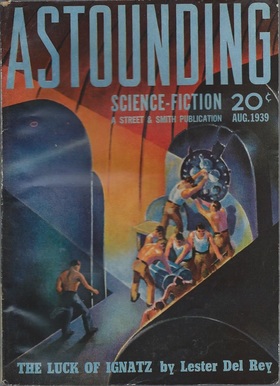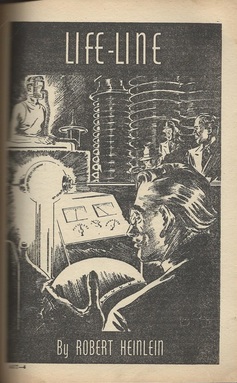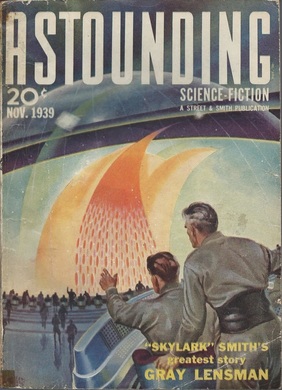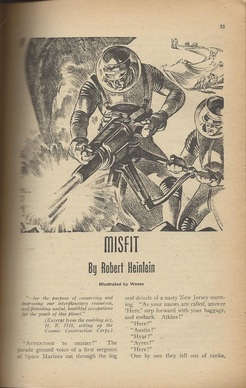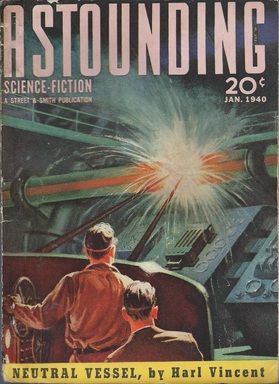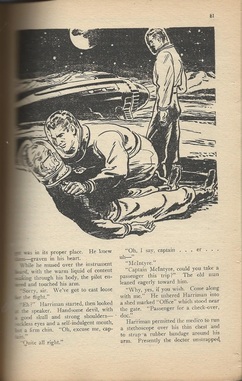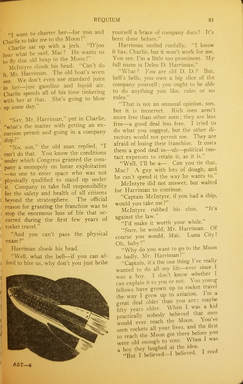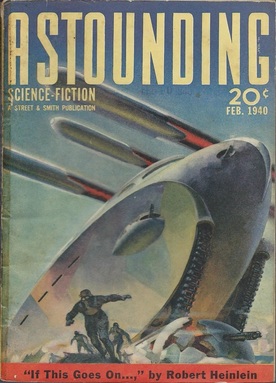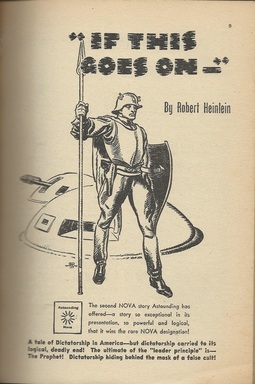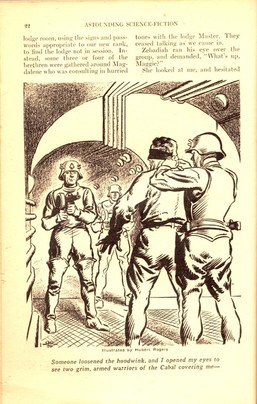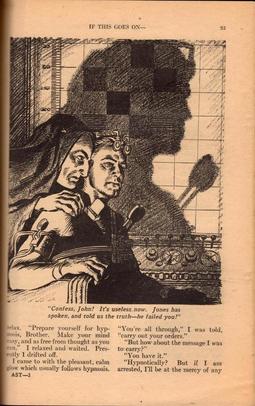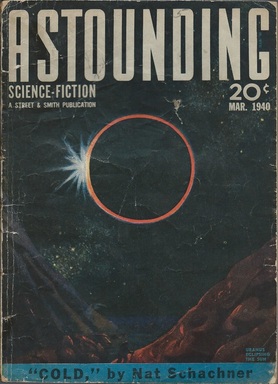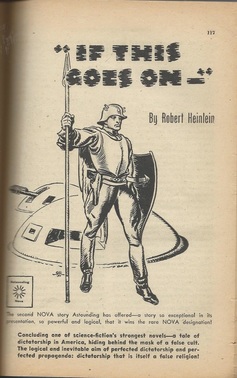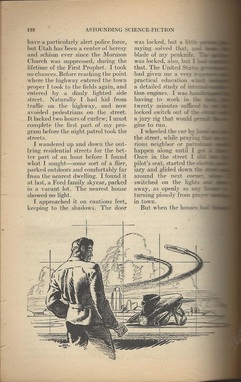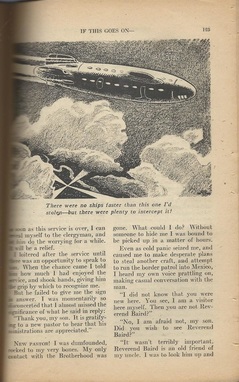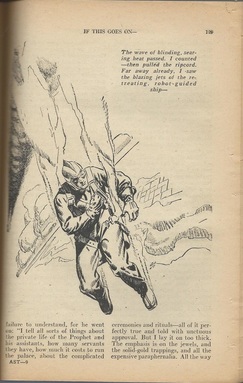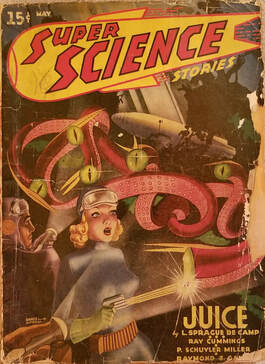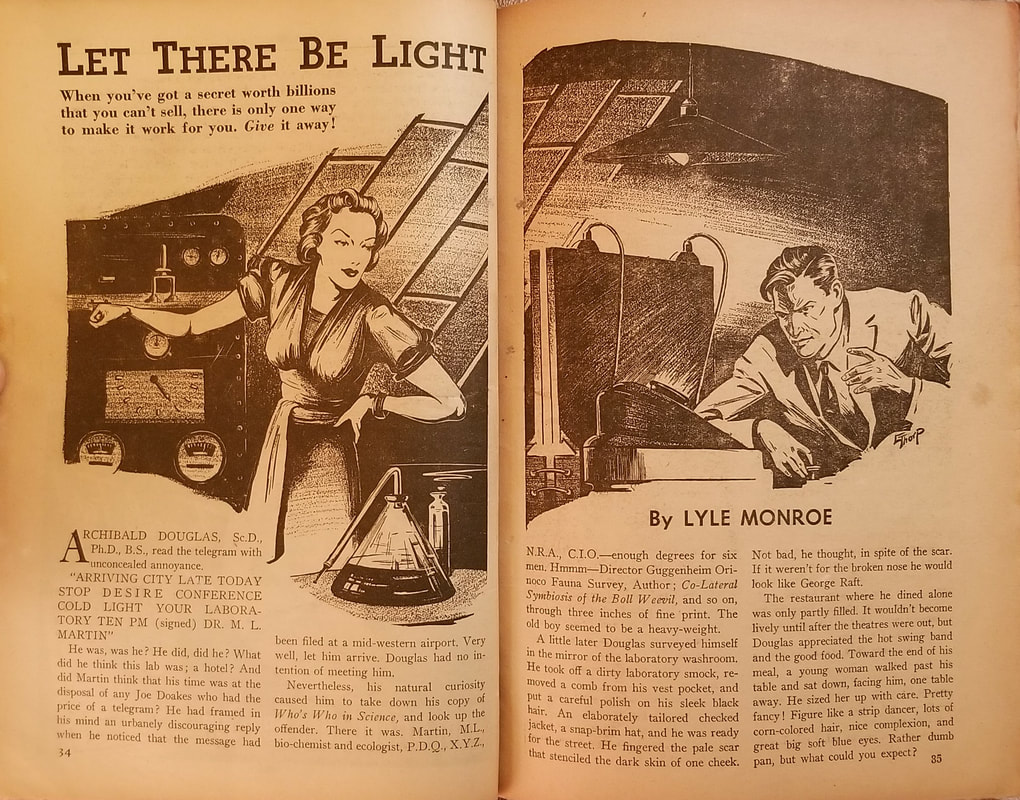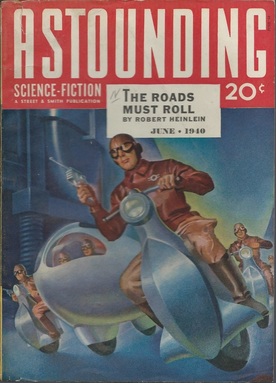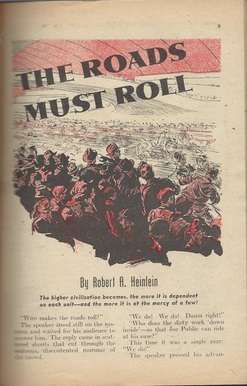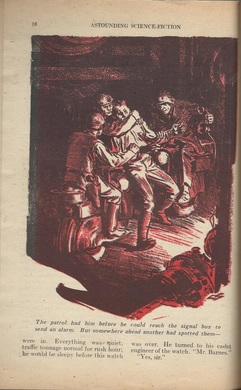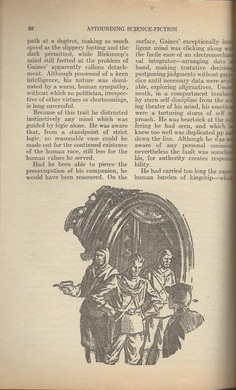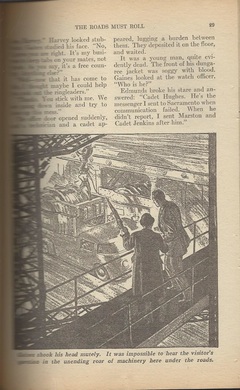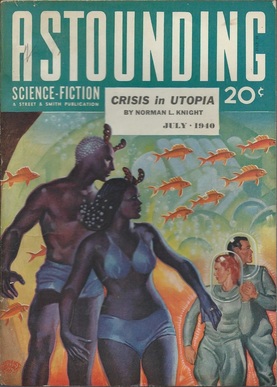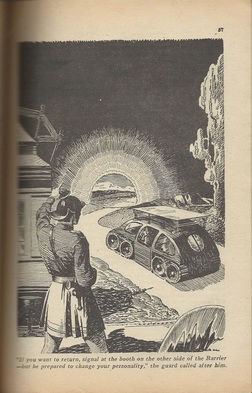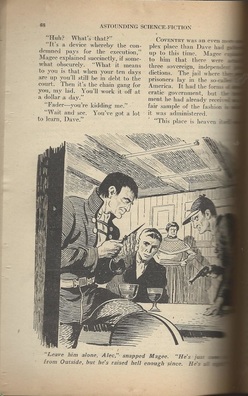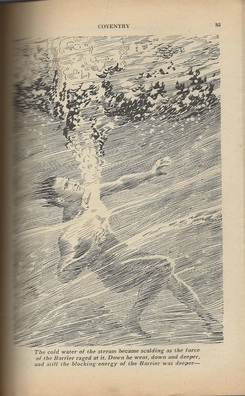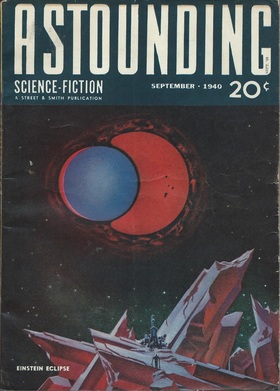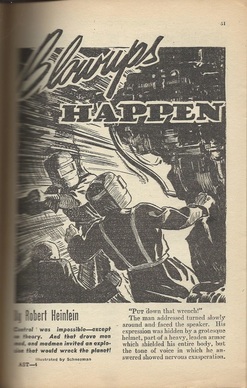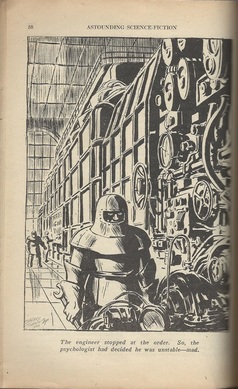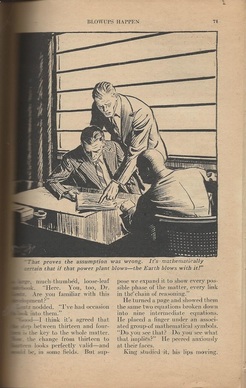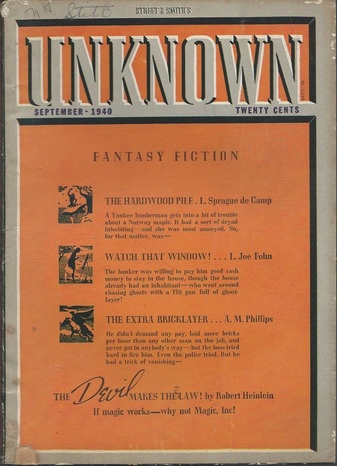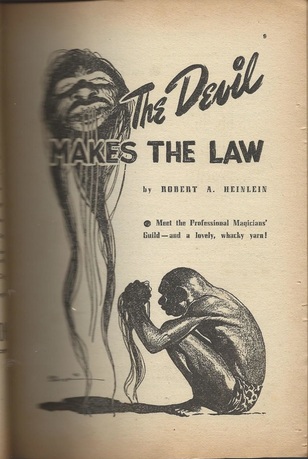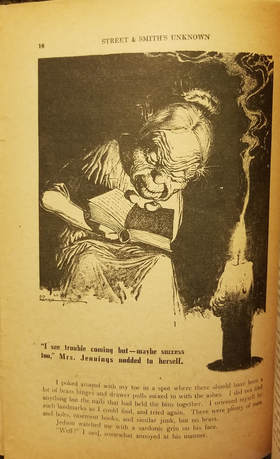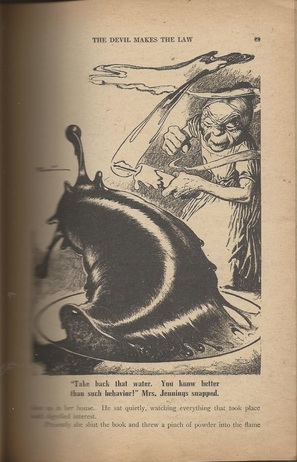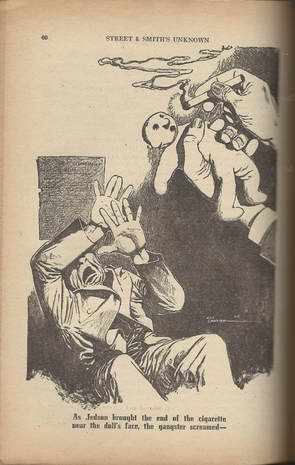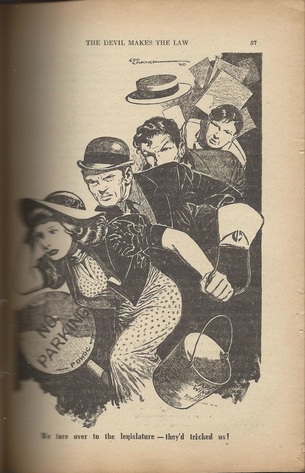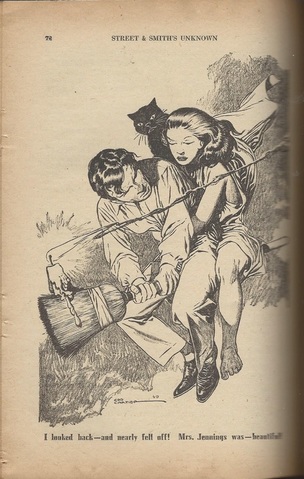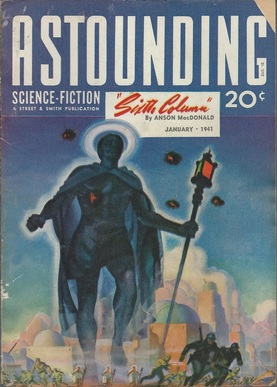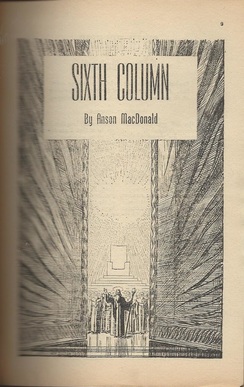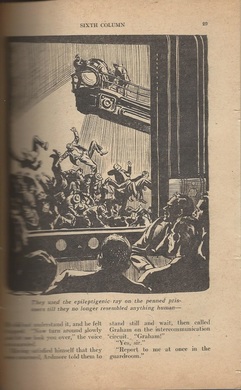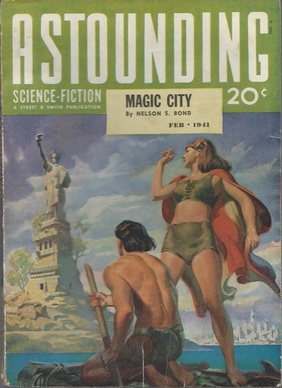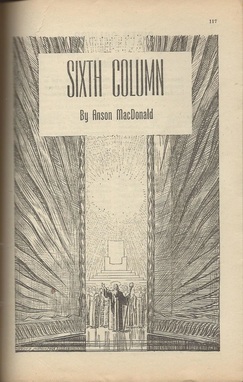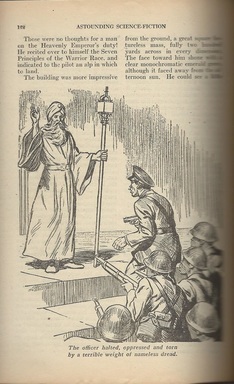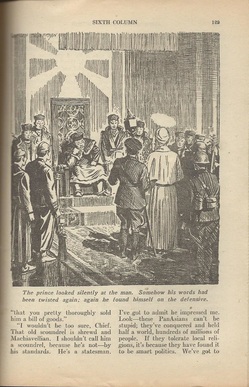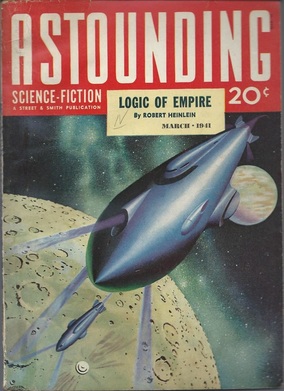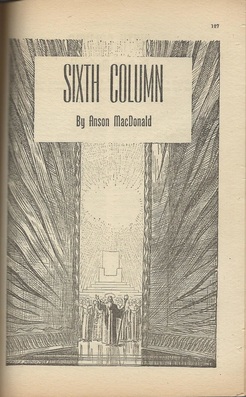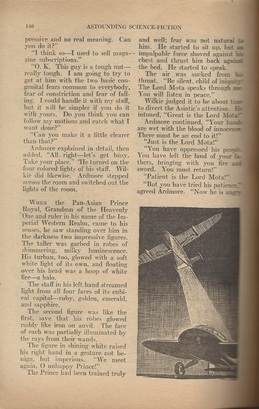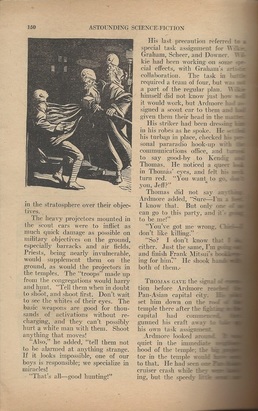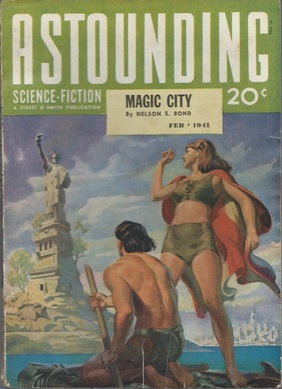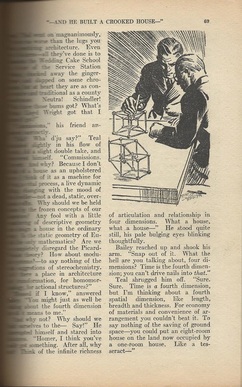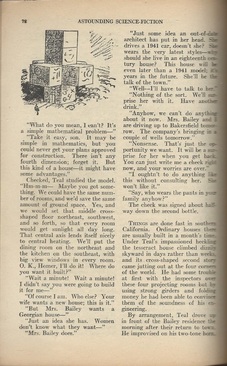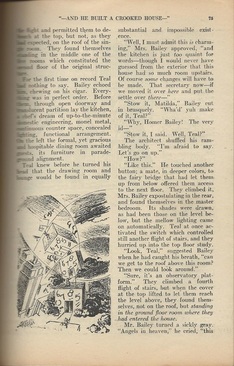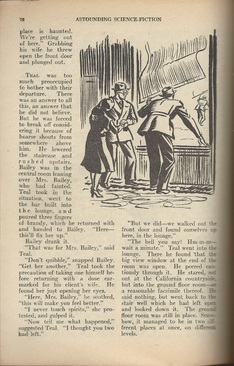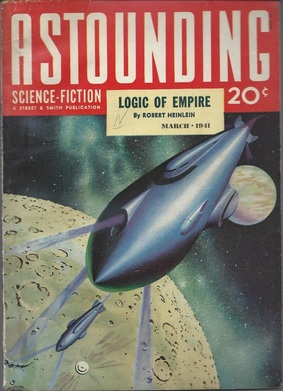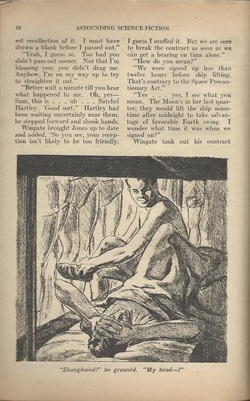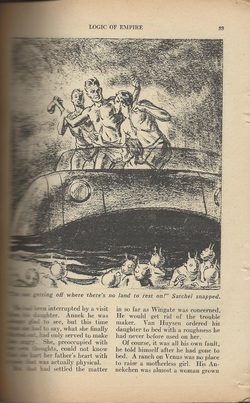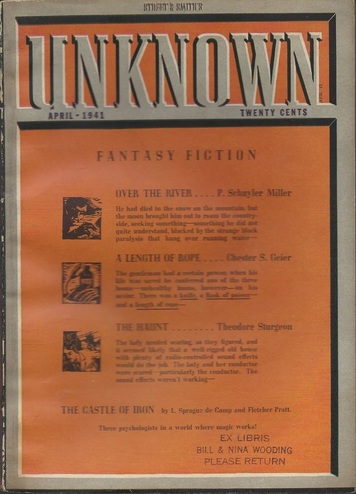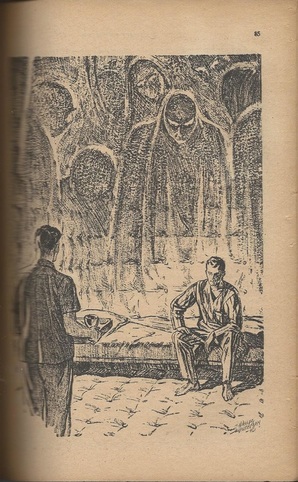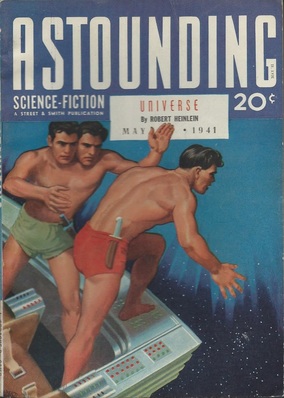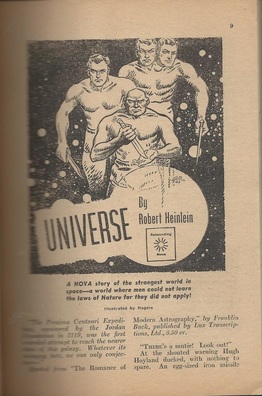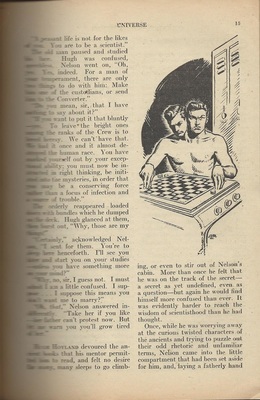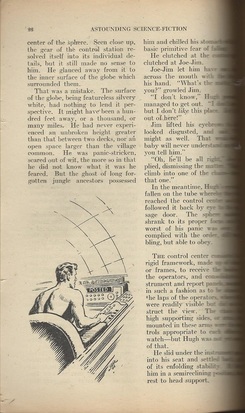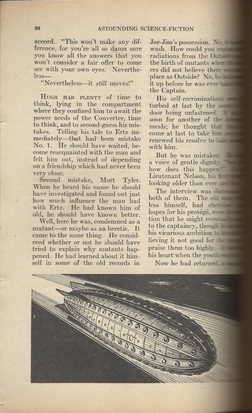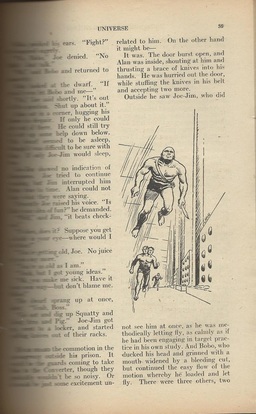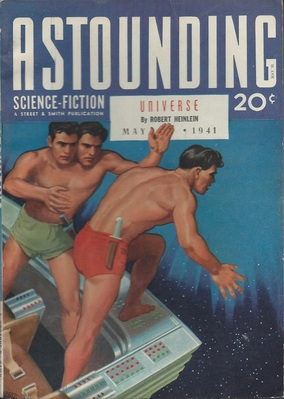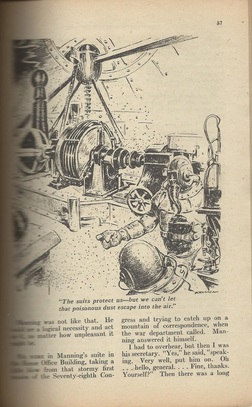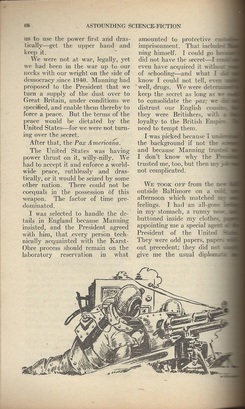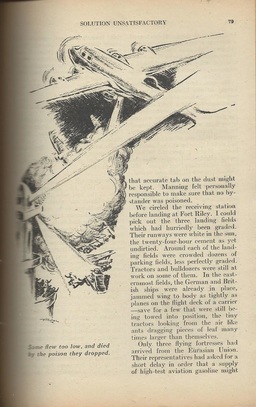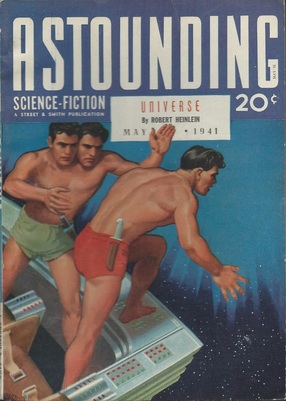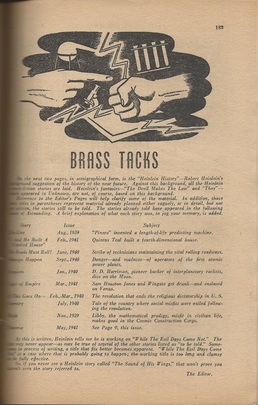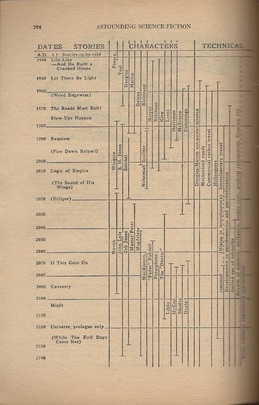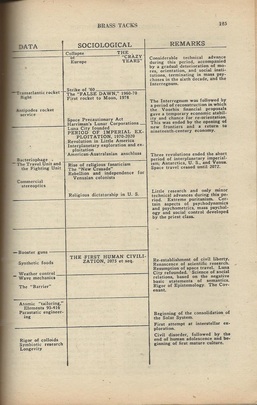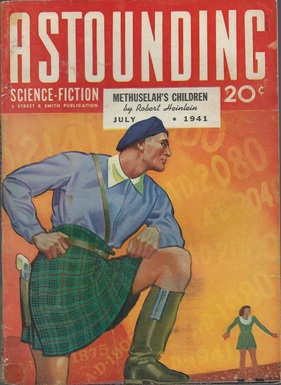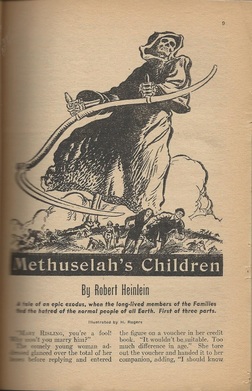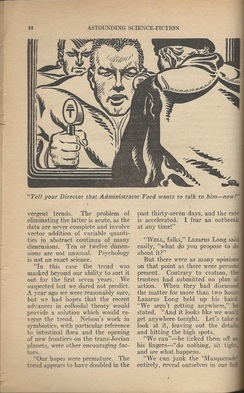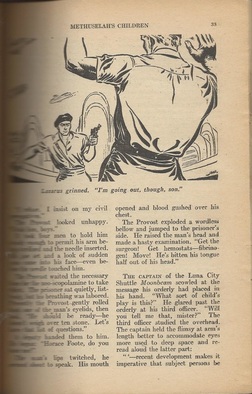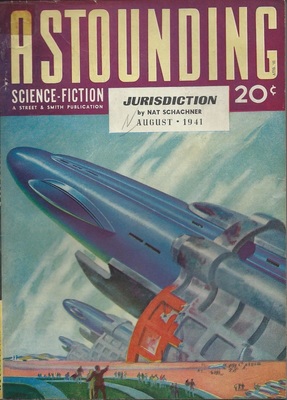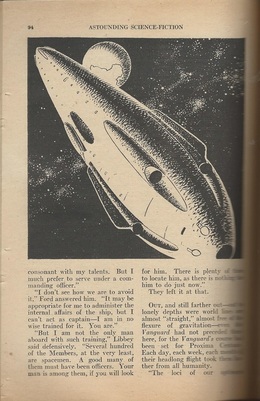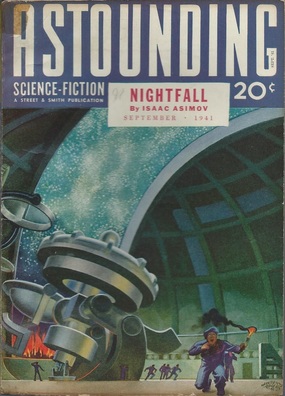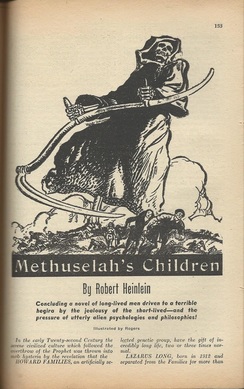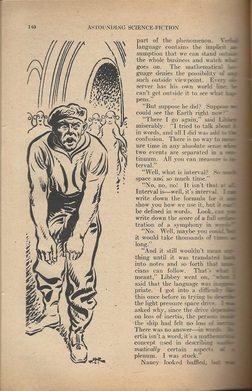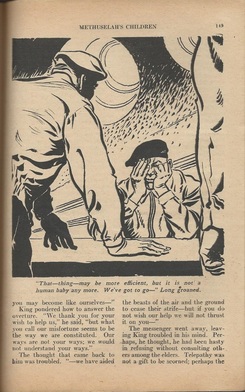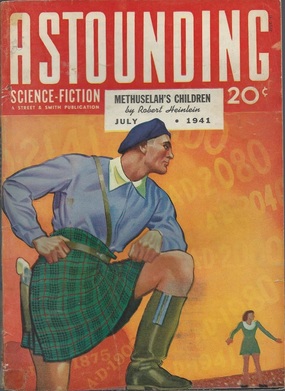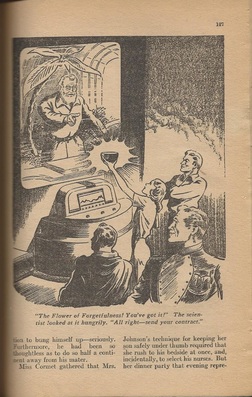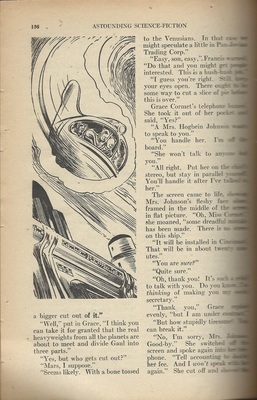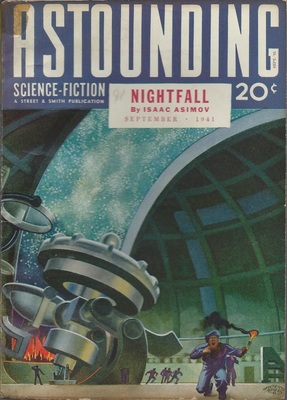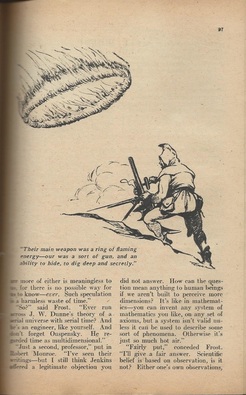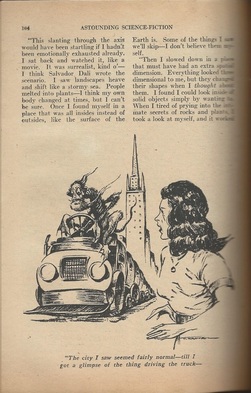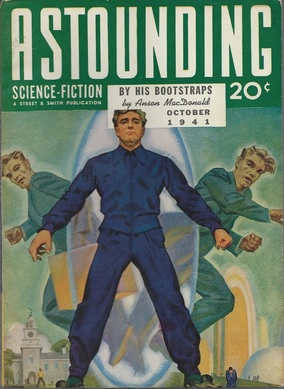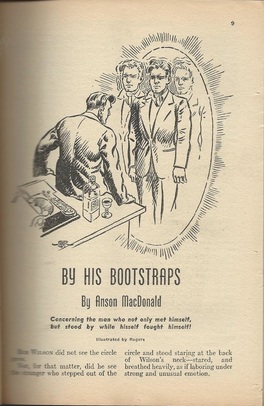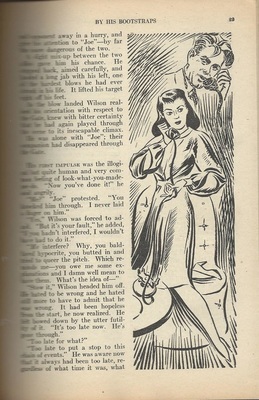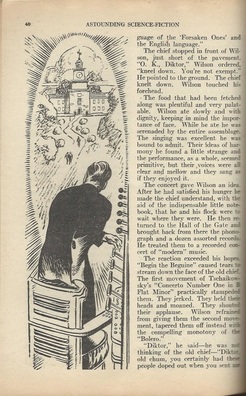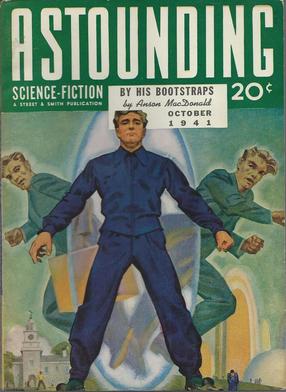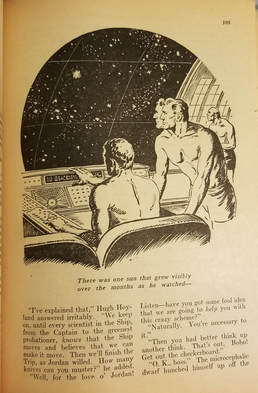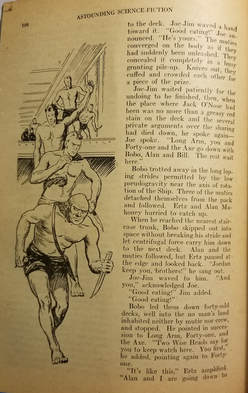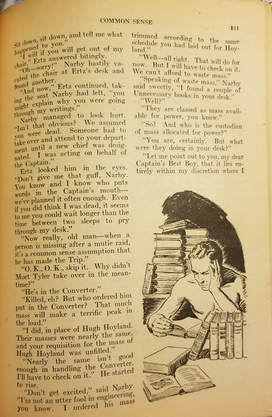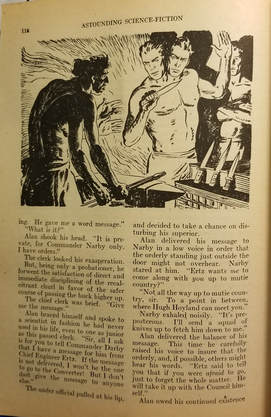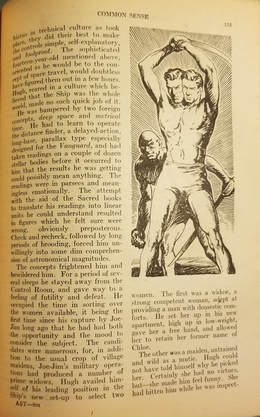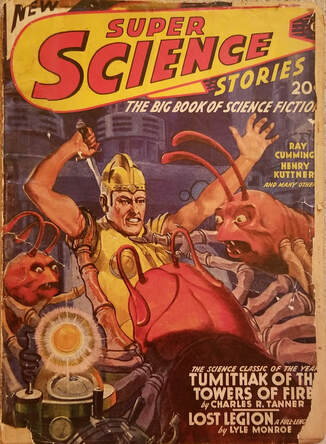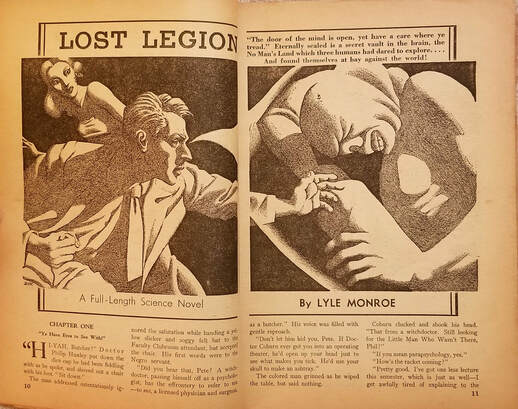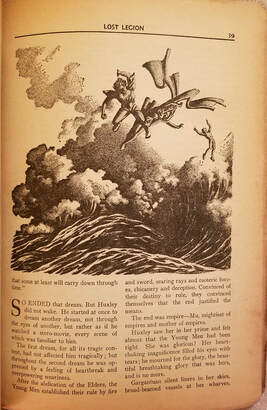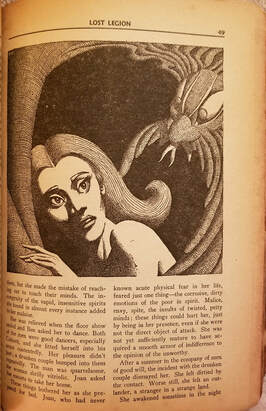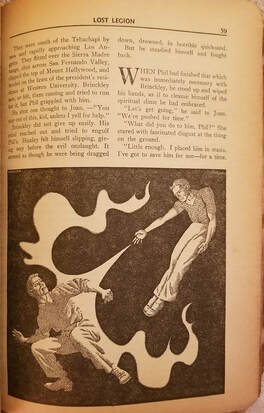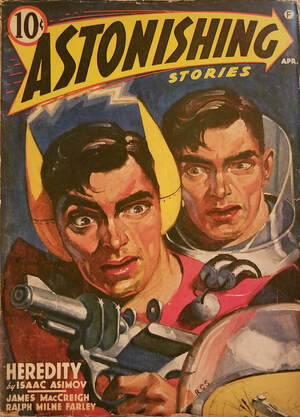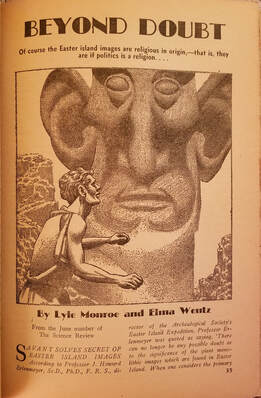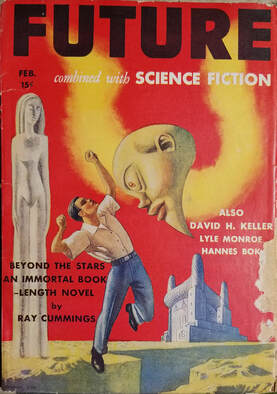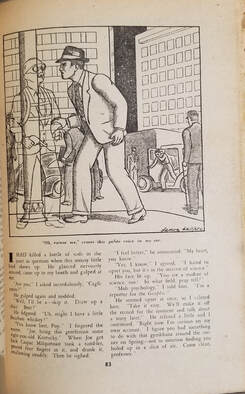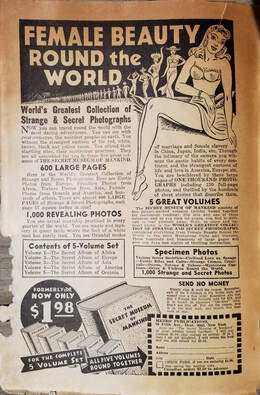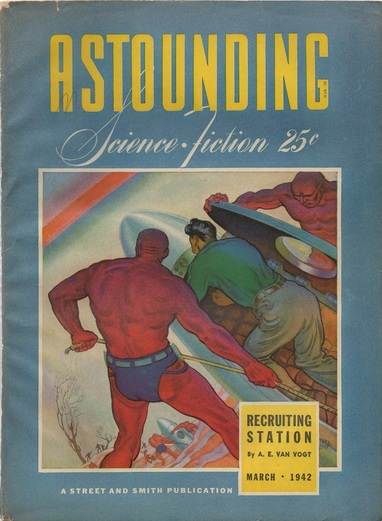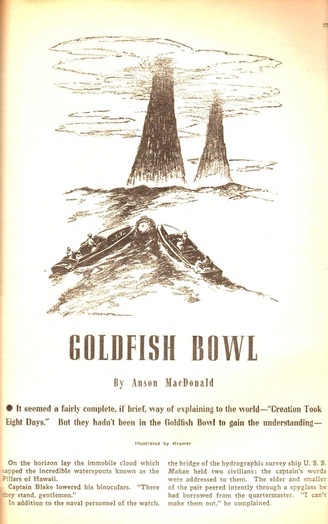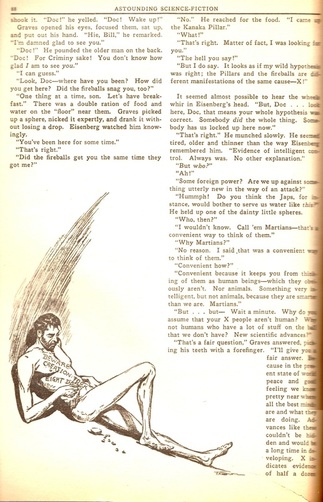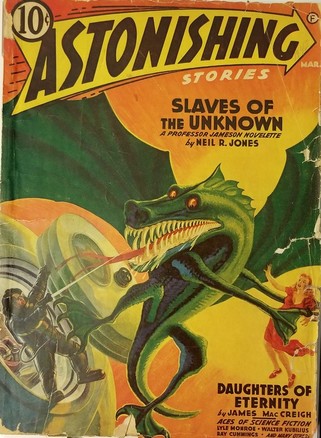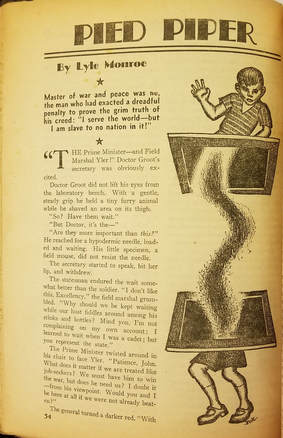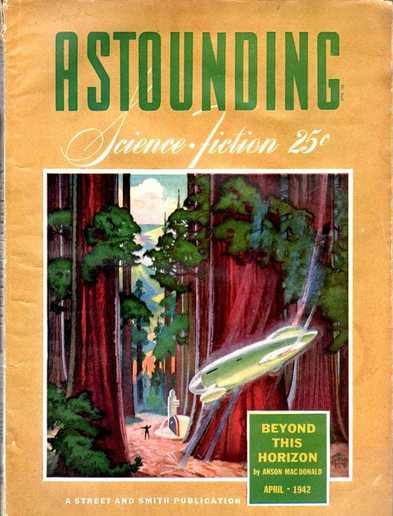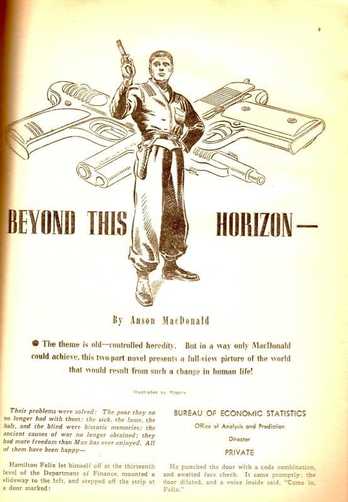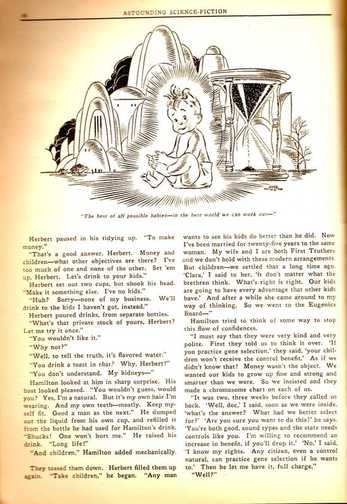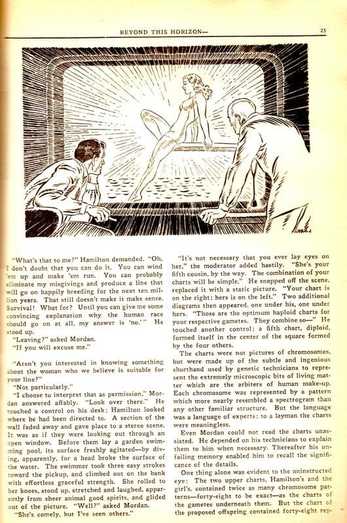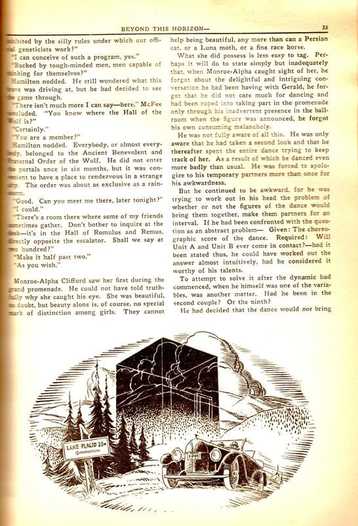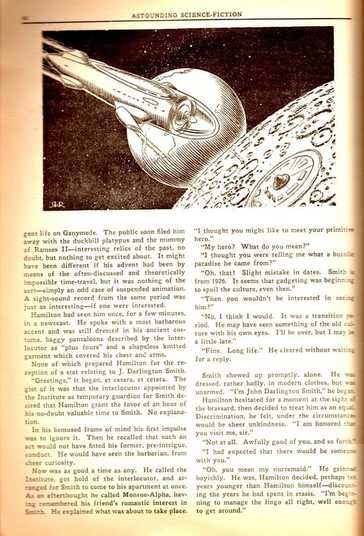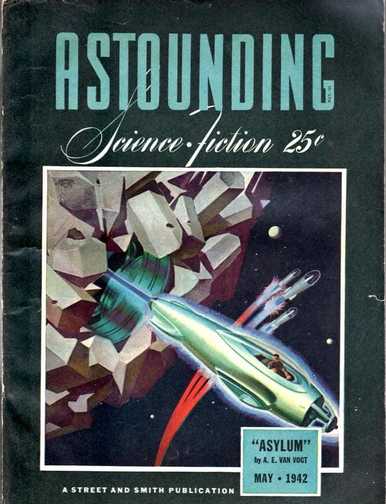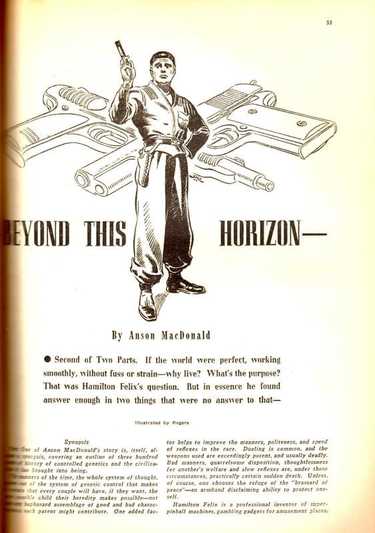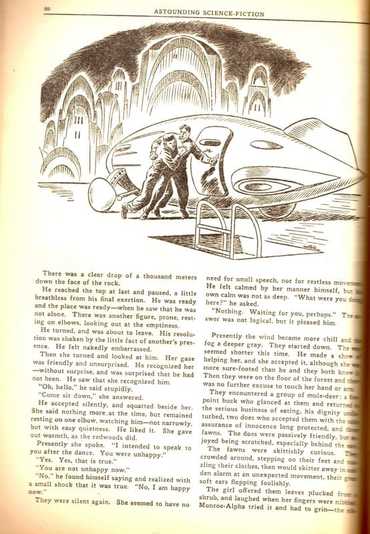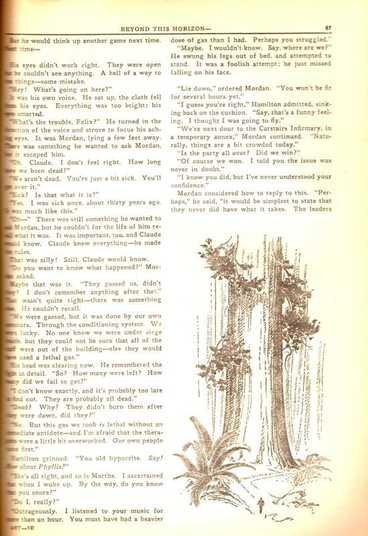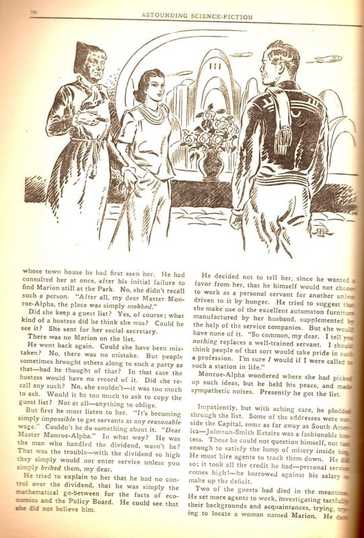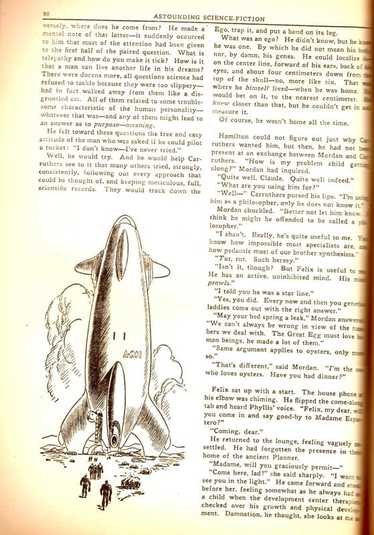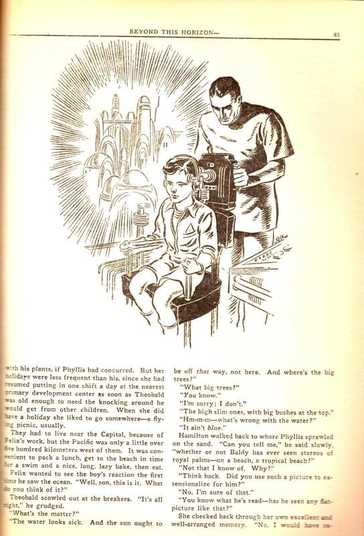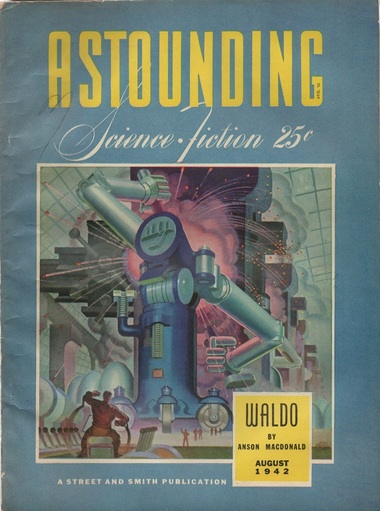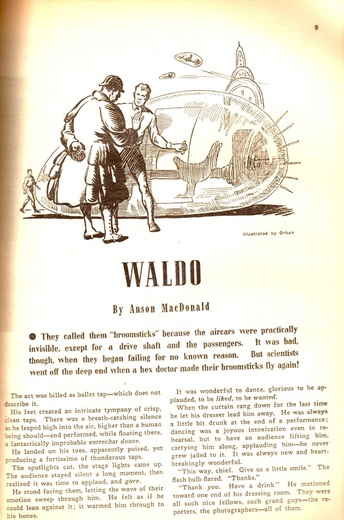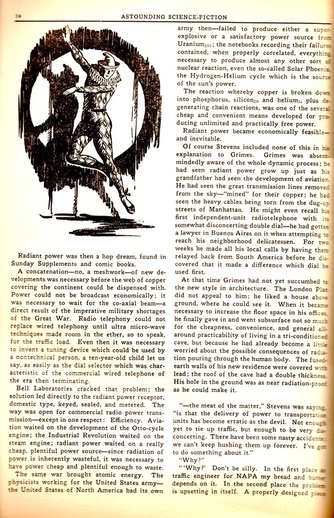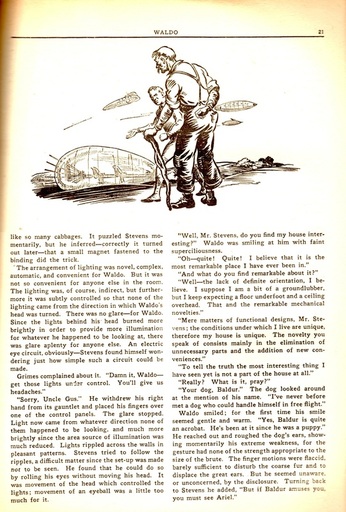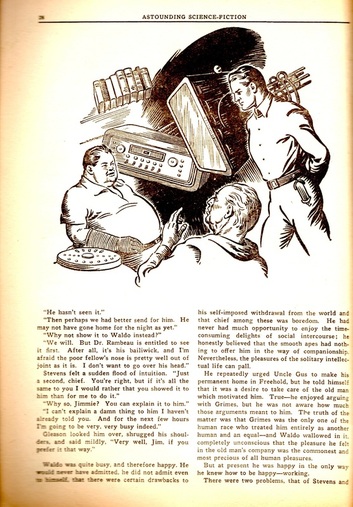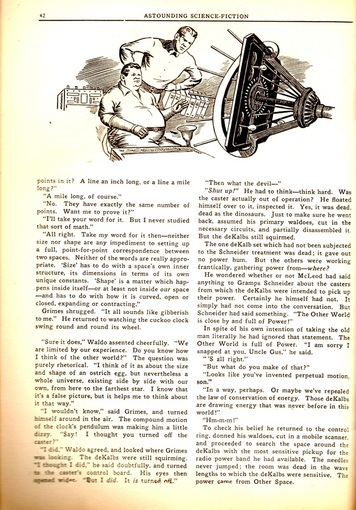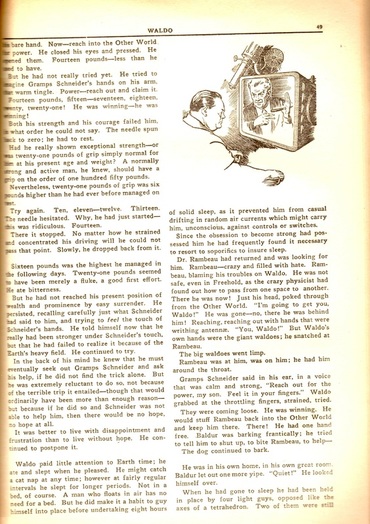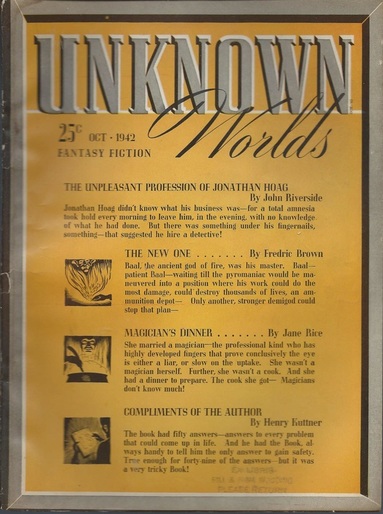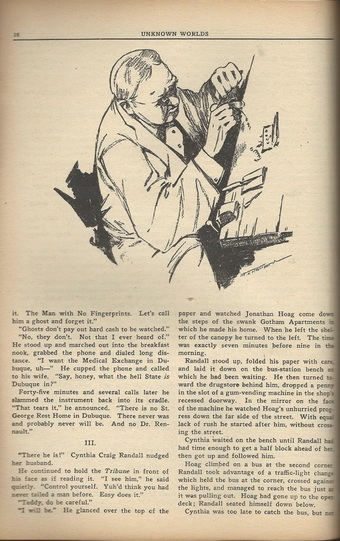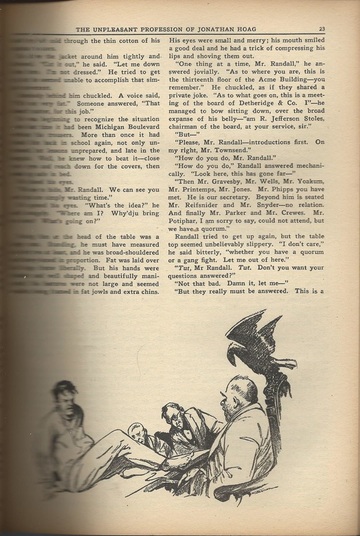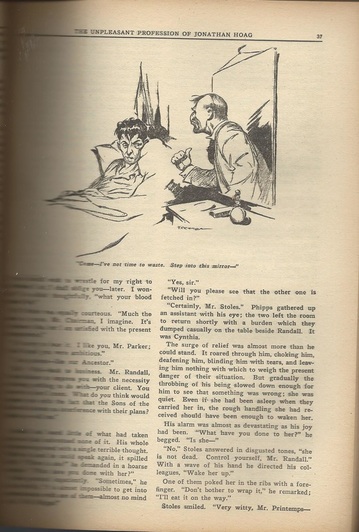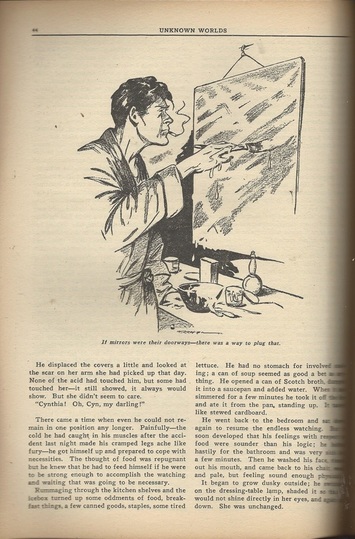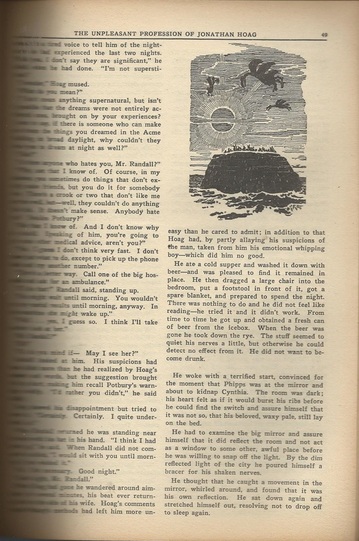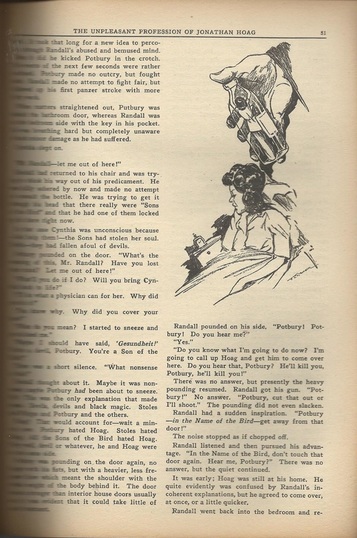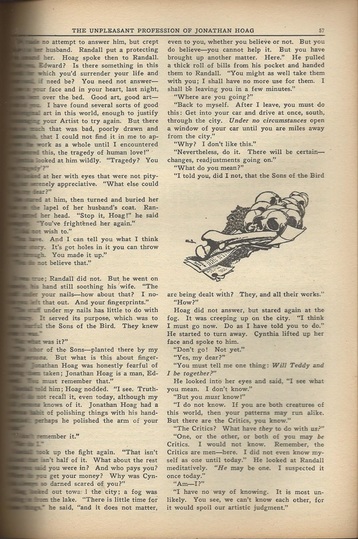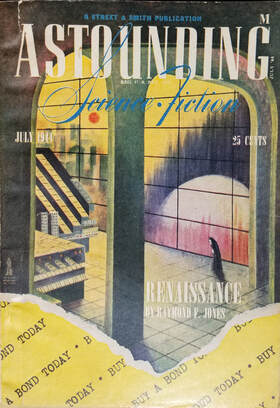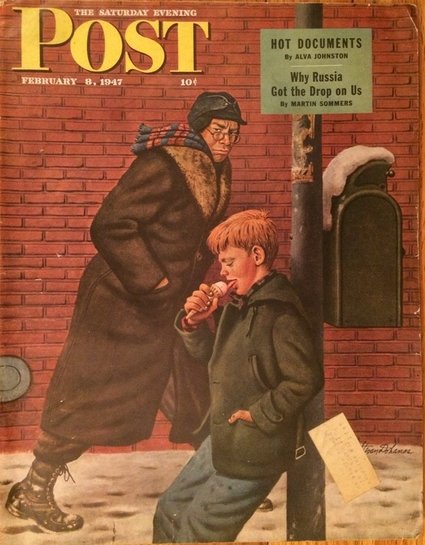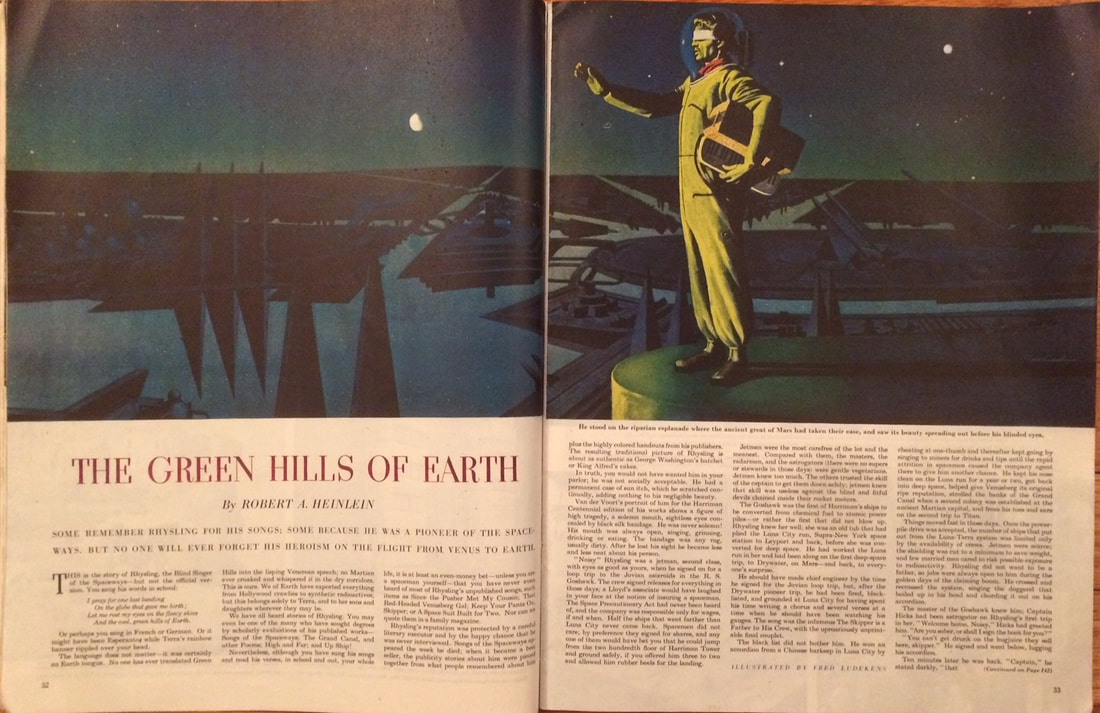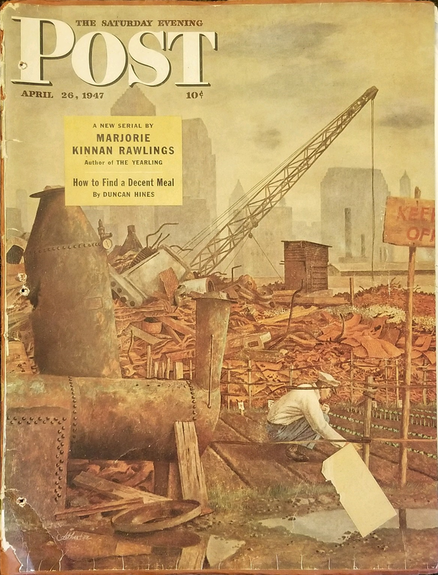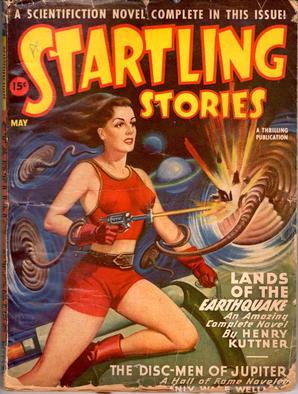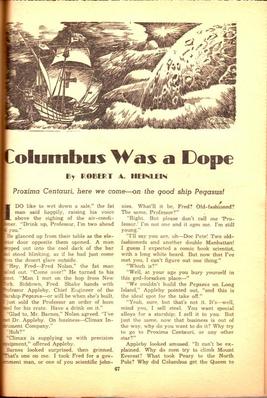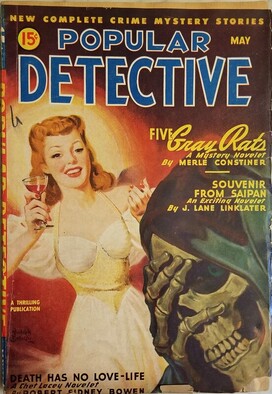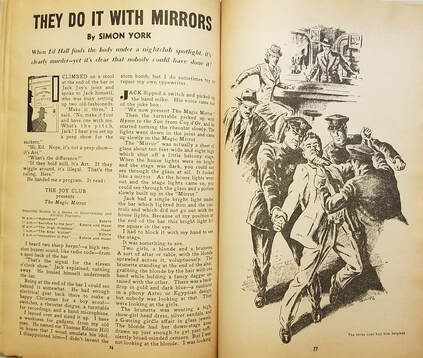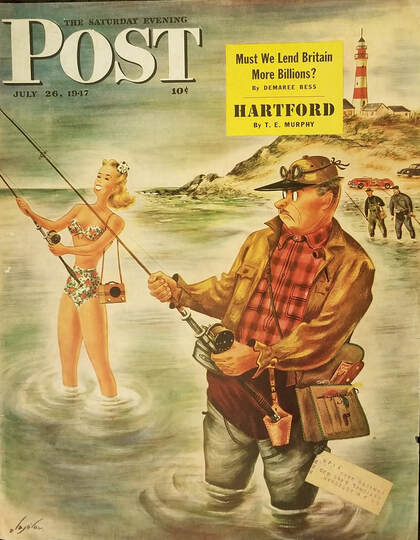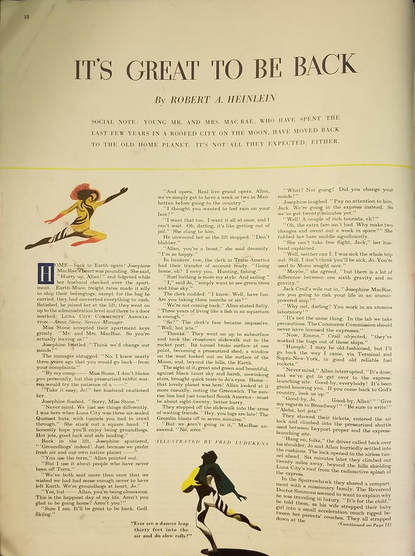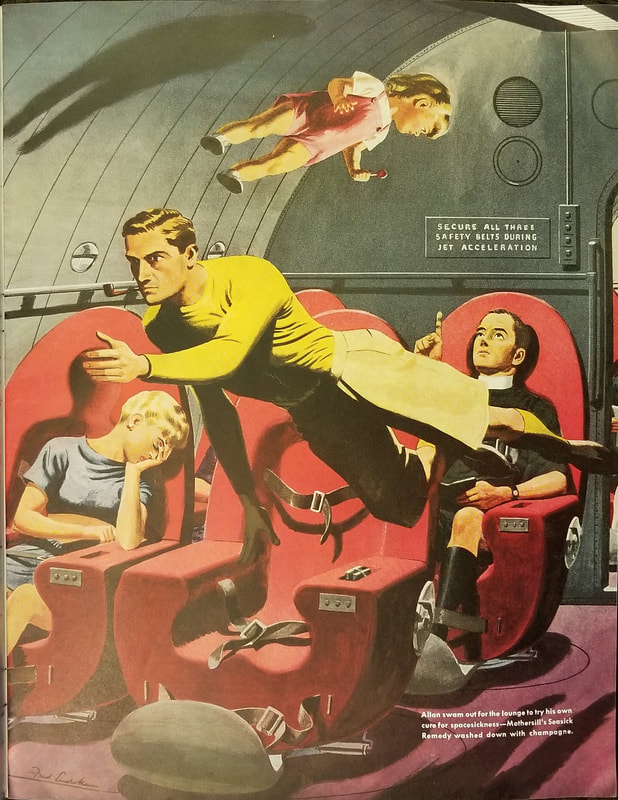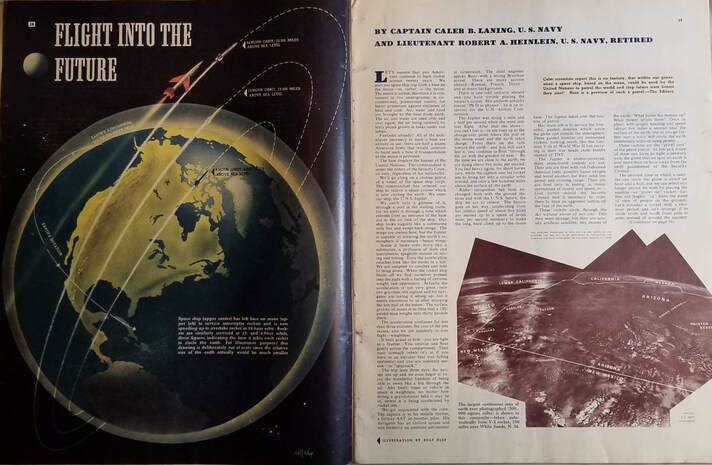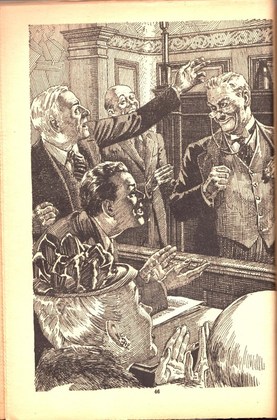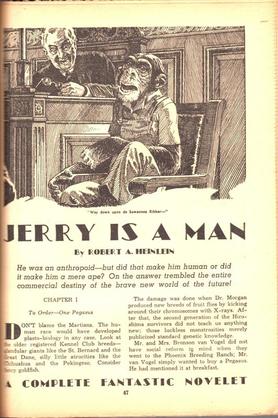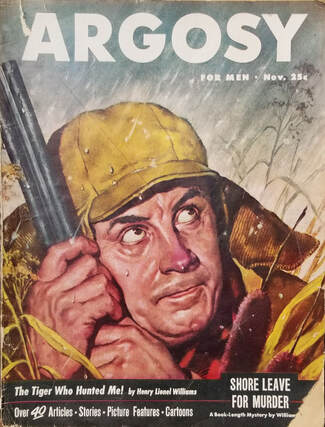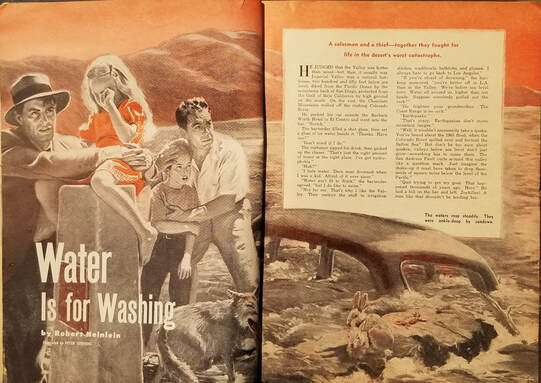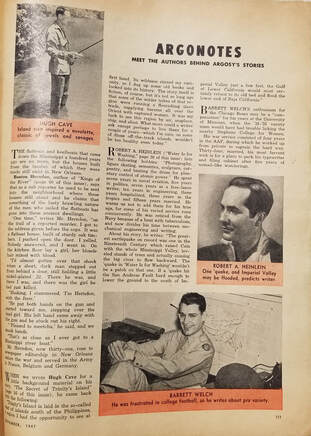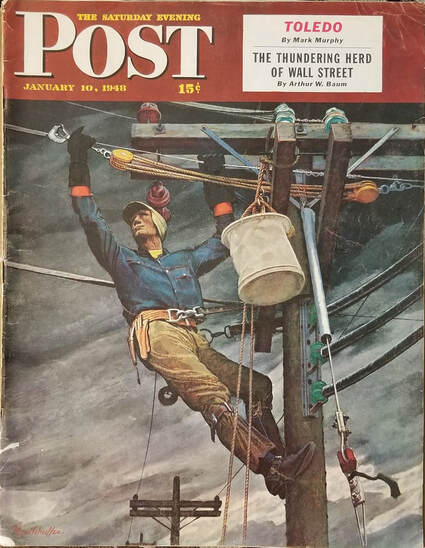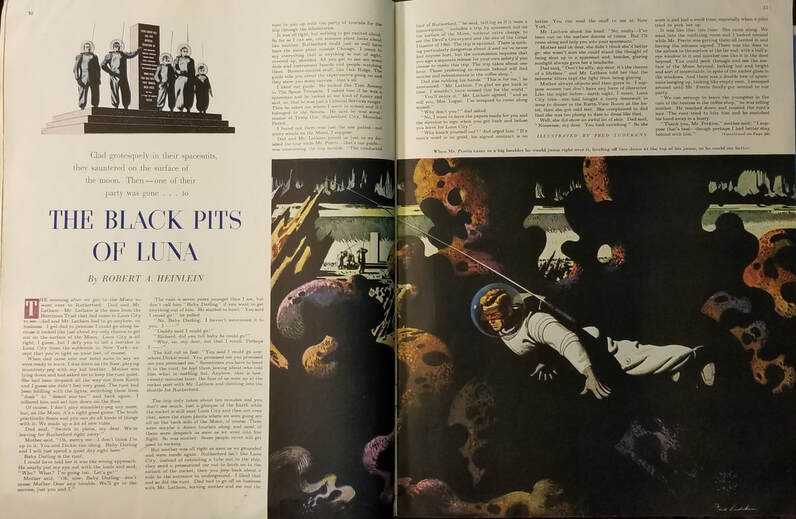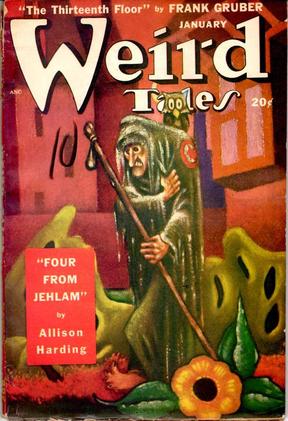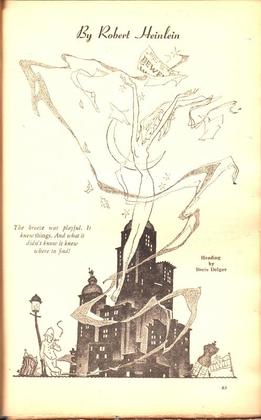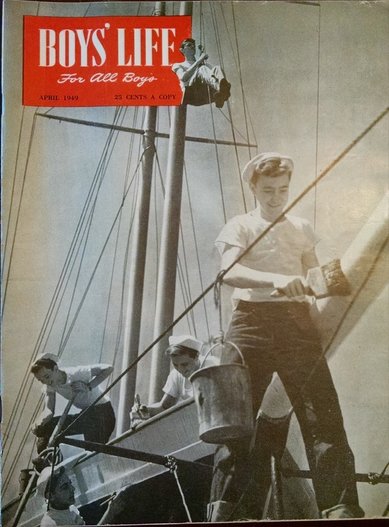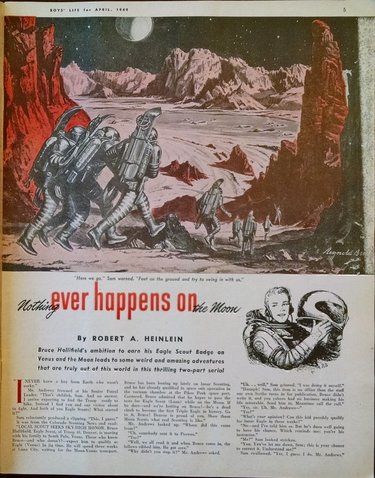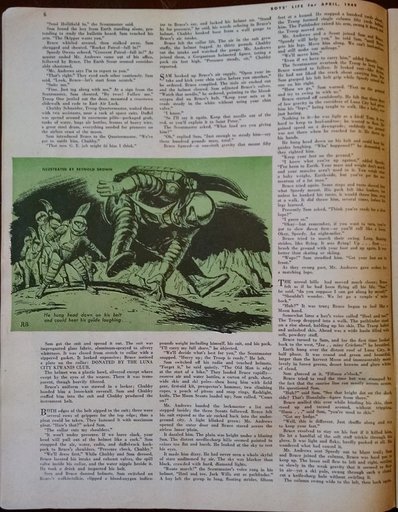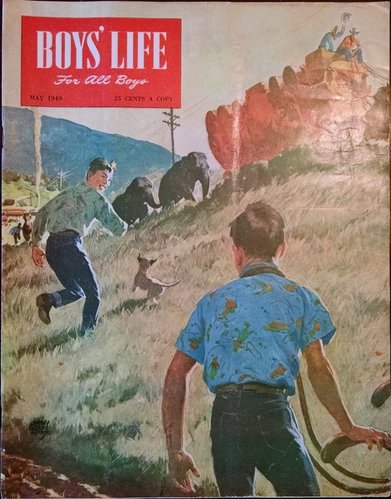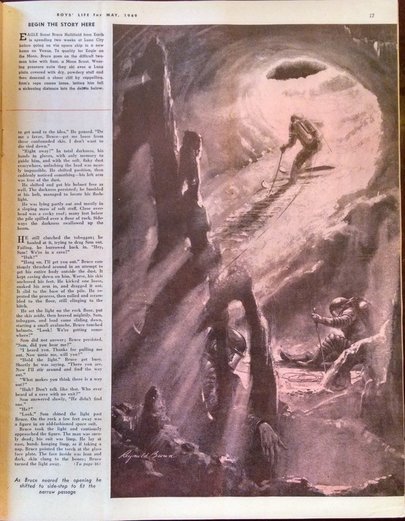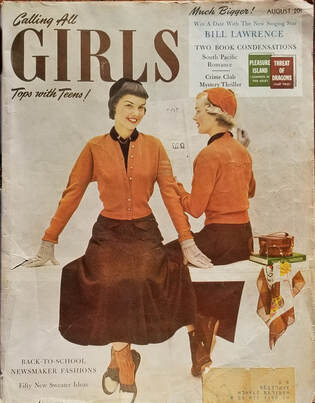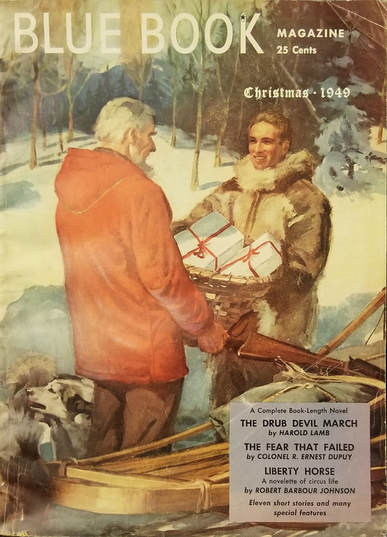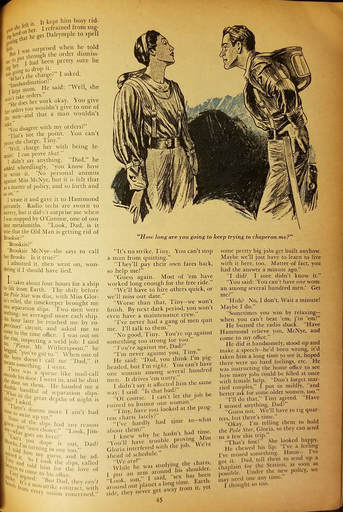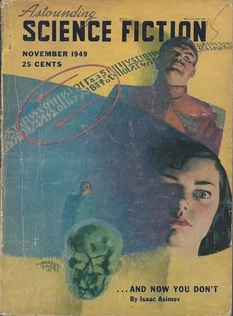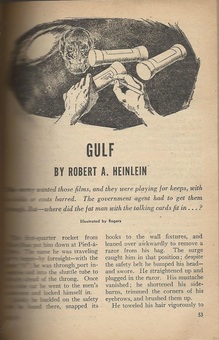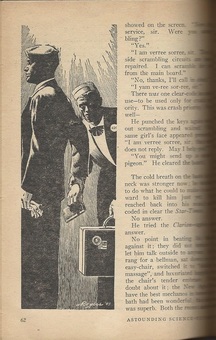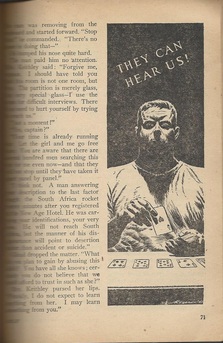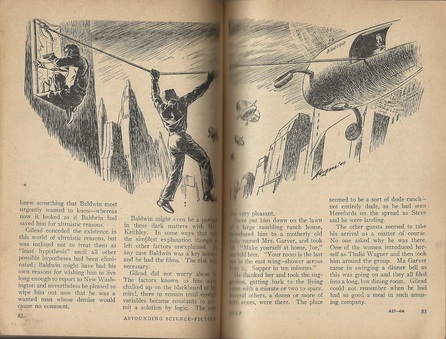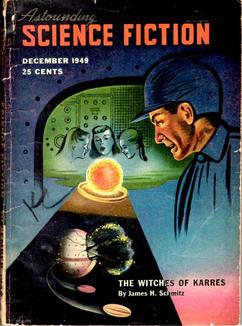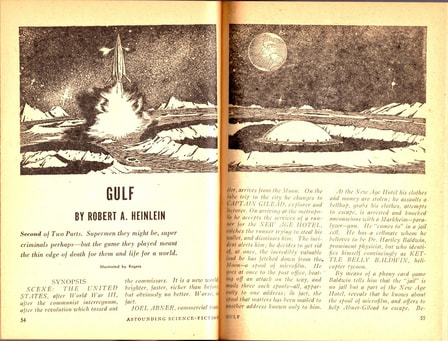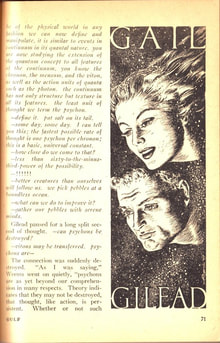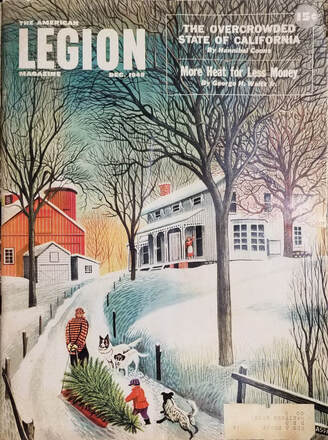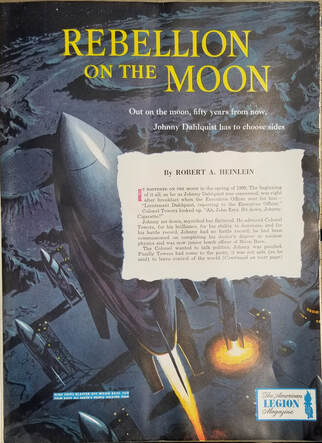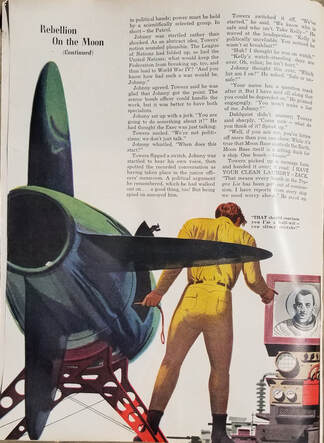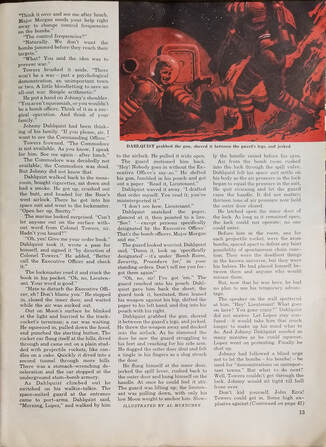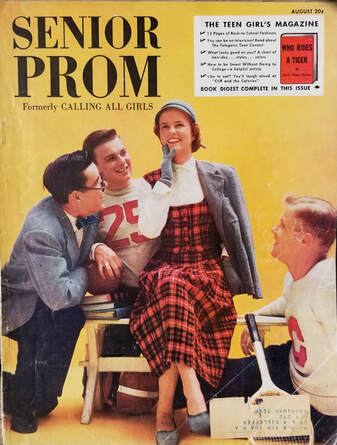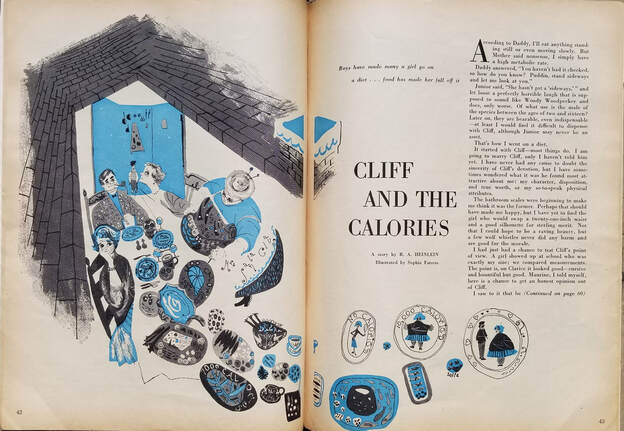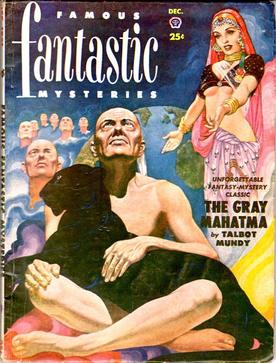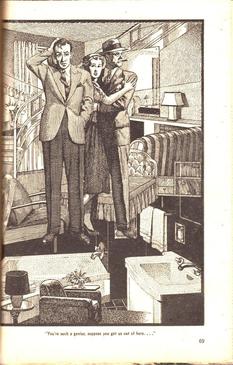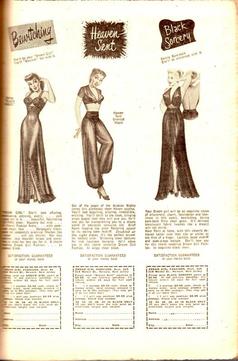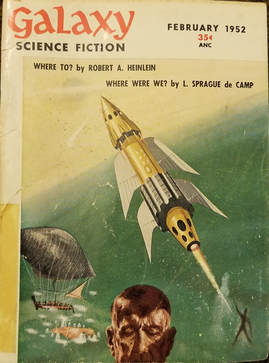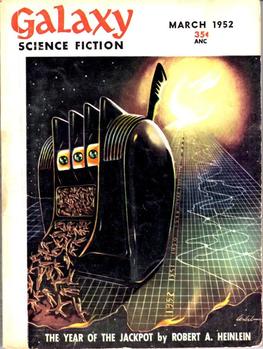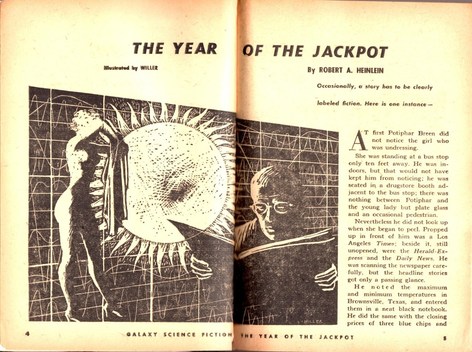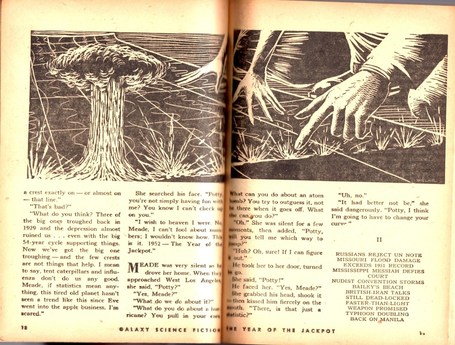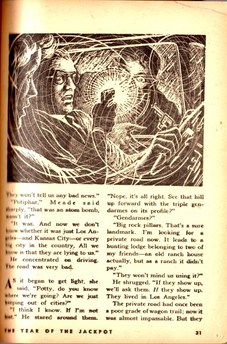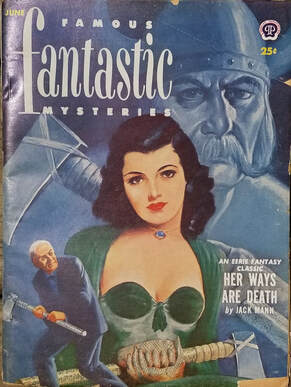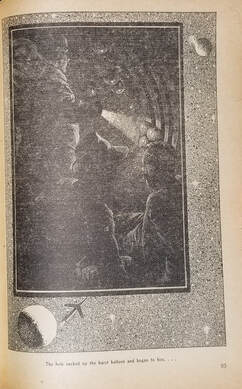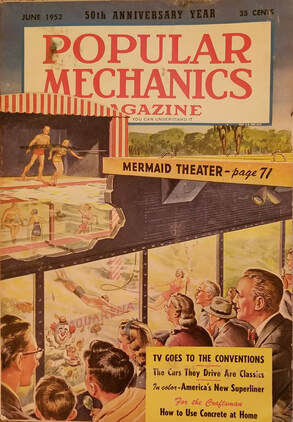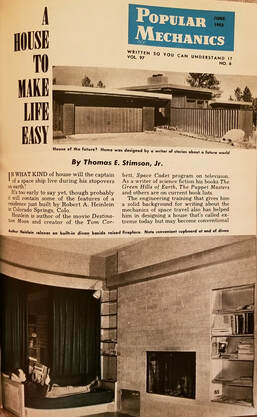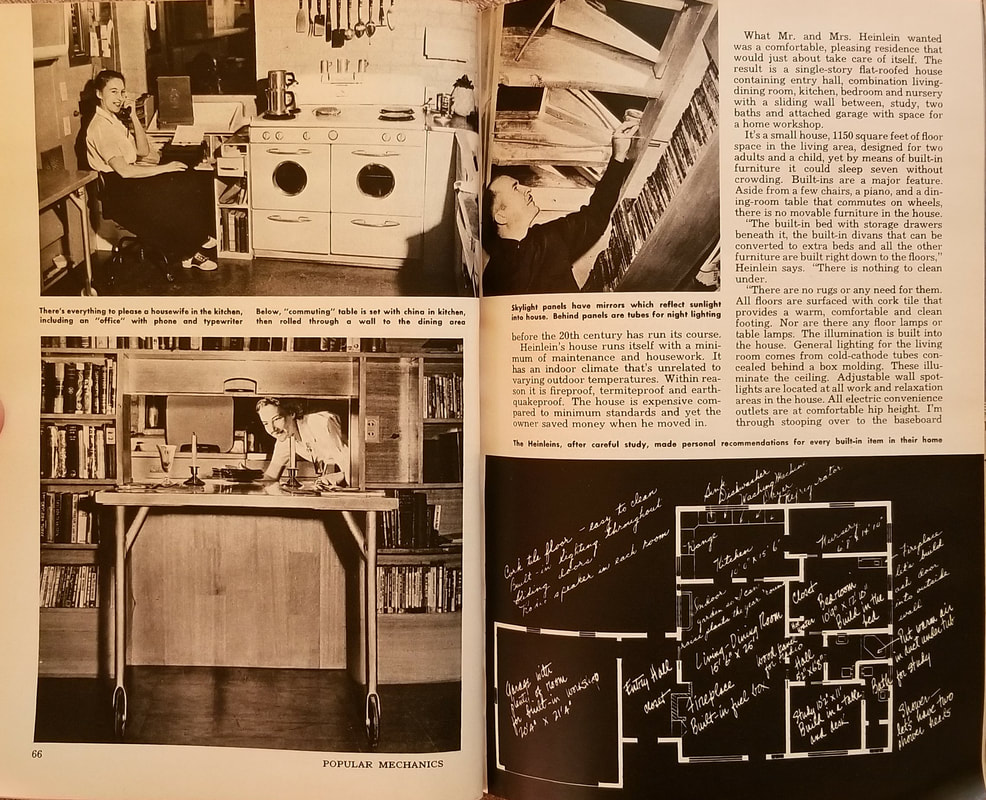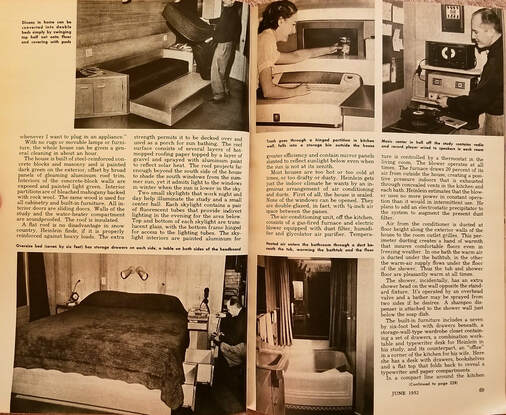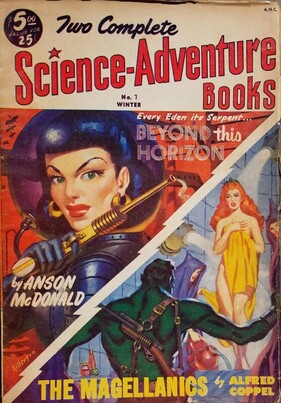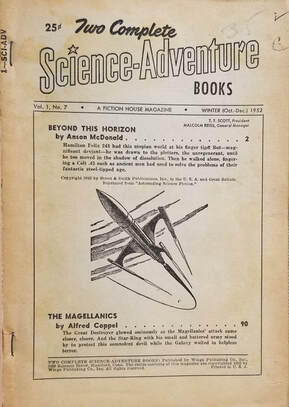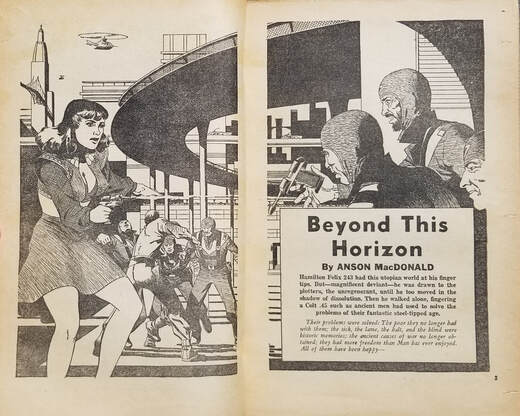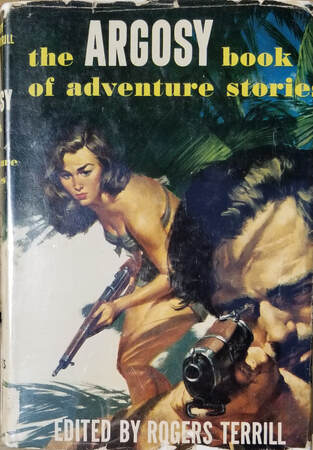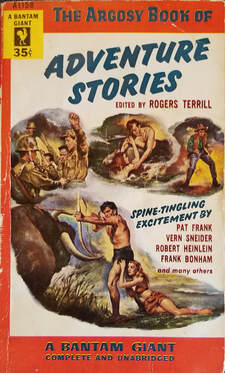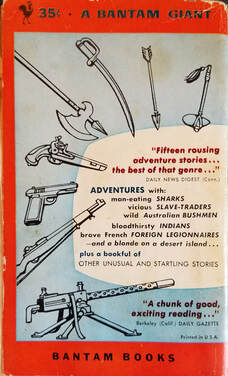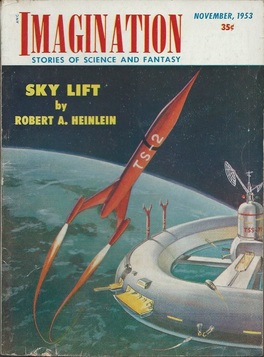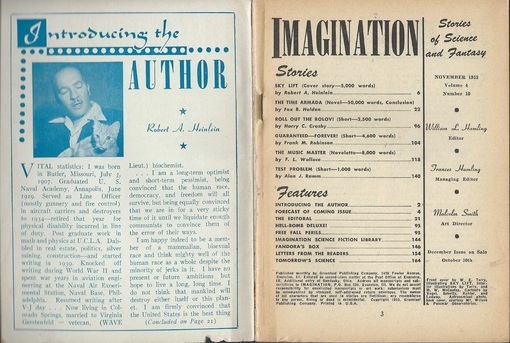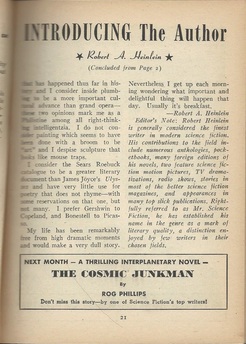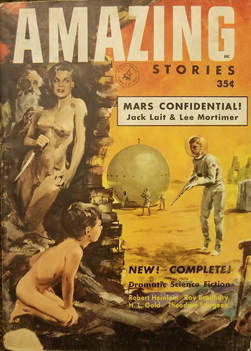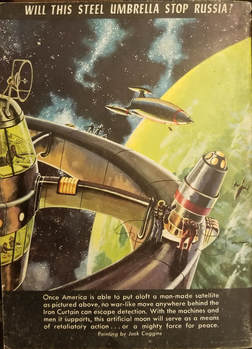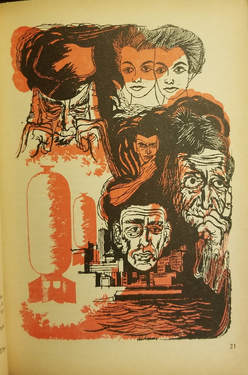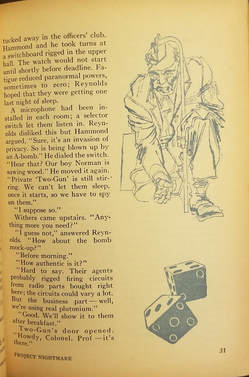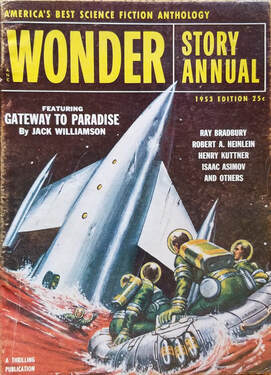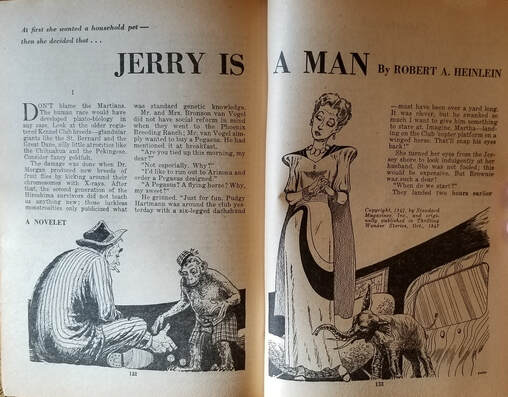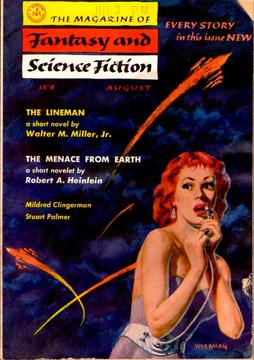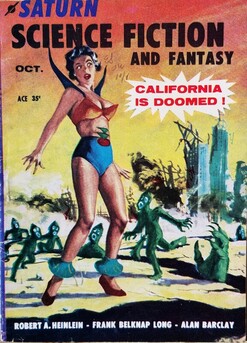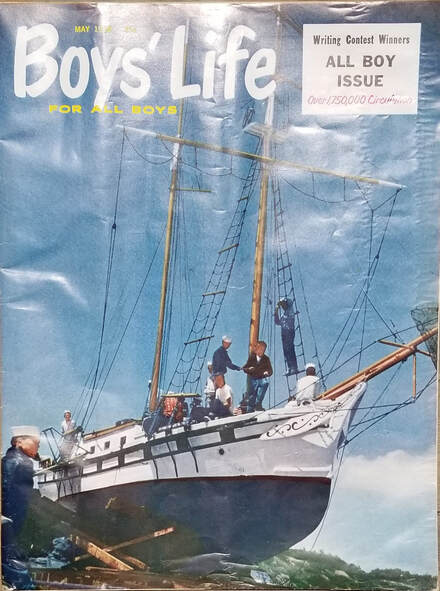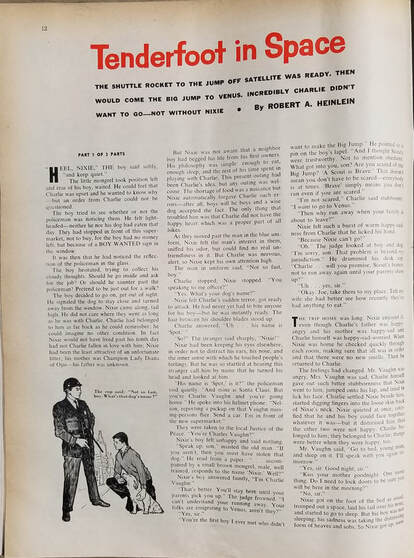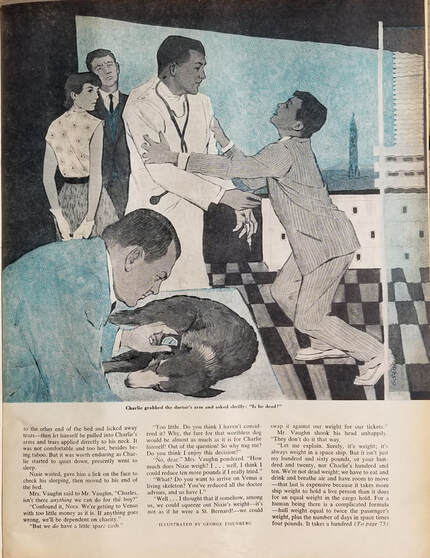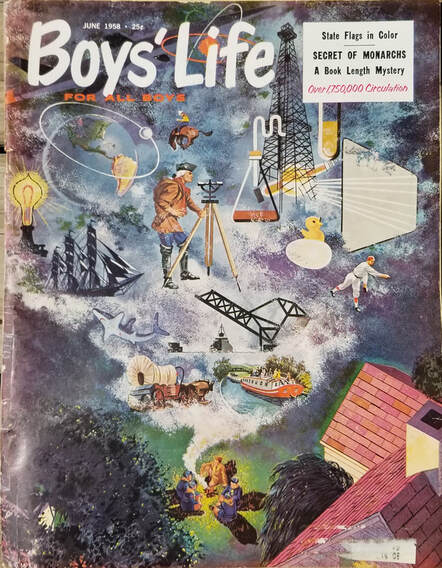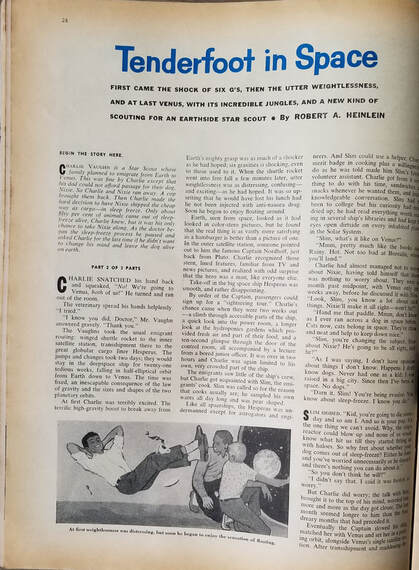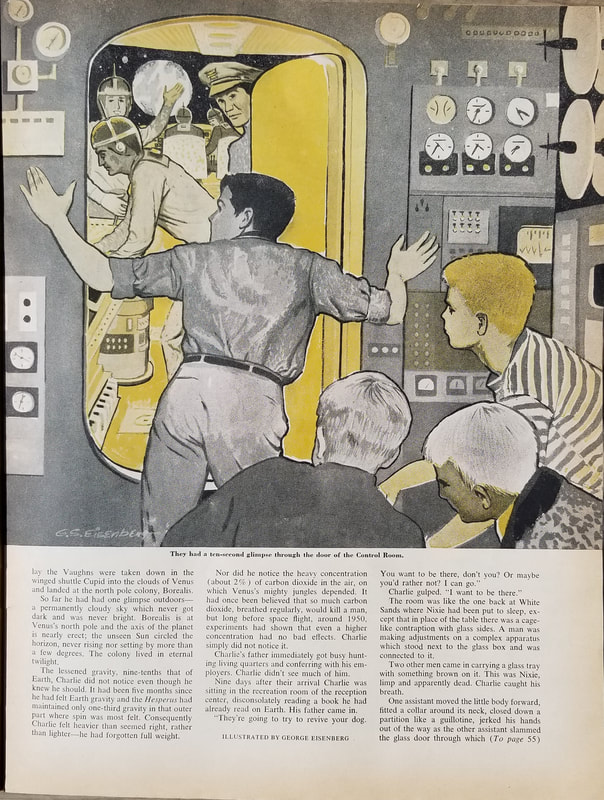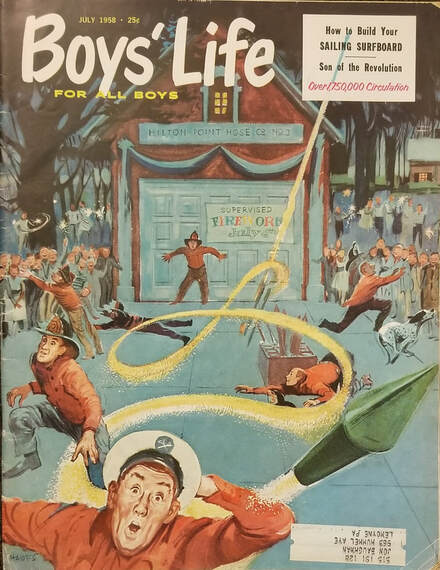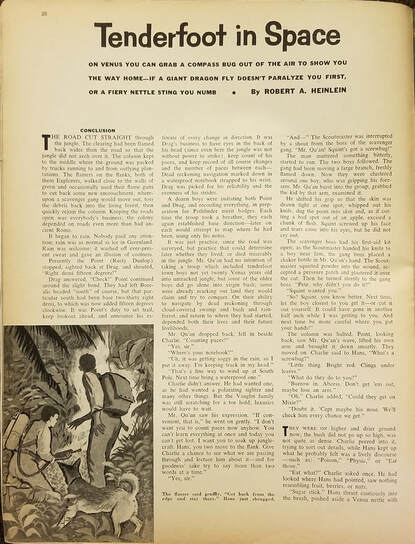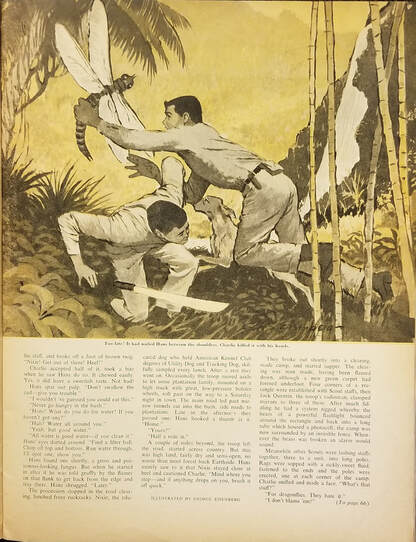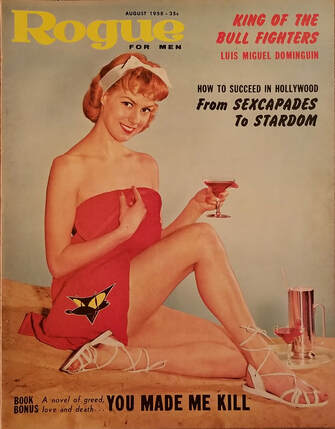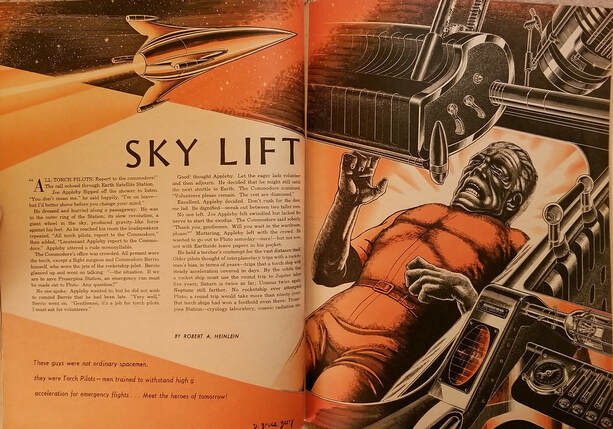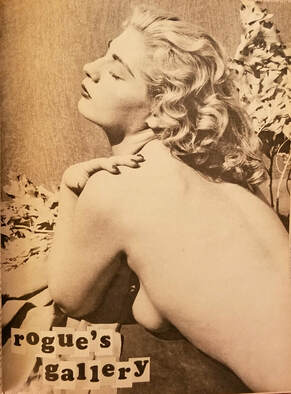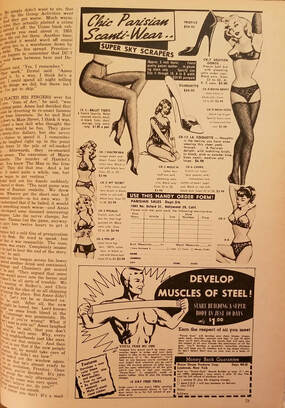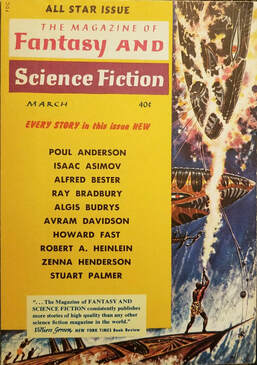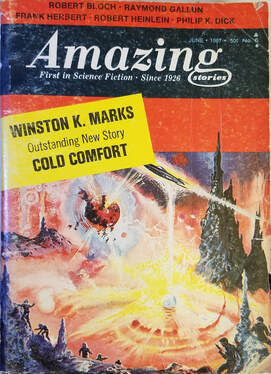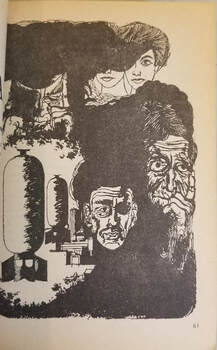Heinlein Cover Art: Pulp Magazines
The pulp magazines of the 1930s and 1940s are a time machine to a colorful past-future of exuberance and, in some respects, innocence. This is the era of Percival Lowell’s canal-girded Mars and of a cloud-shrouded Venus of swamp and jungle, visited by streamlined rocket ships carrying strong-jawed spacemen and, occasionally, shapely spacewomen in semi-transparent costumes. Of course, Heinlein’s works, it should be noted, are never simple space opera or cowboys-and-Indians in space.
Back then, these magazines cost only a quarter. Nowadays, if you can get one for a hundred times that—if you even happen to stumble across one of these rare old babies in a shop somewhere—you’re doing pretty well. But when you pull such a periodical off the shelf, you are holding a piece of history...and smelling it, too, that soft, evocative scent of paper-fragile years now vanished. When the magazines below were published, after all, Heinlein was still at the beginning of his career, the outcome of the Second World War was by no means certain, and the first manned space shot was still a quarter-century away.
One interesting difference between these magazine covers and those of books, by the way, is that these are beautifully big. Even a small one, like the Imagination at the bottom of this page or some of the 1950s or 1960s magazines on my “Serializations” page are 7.5 x 5.5 inches, which is noticeably larger than a paperback. The Astounding Science-Fiction of the 1930s through mid-1942, however, are a beautiful 9.25 x 6.5 inches. And yet Unknown of late 1942, and the Astounding of mid-1942, are a staggering 11.25 x 8.5 inches. These can be, therefore, huge canvases for the SF art of a lifetime ago, and well worthy of our enjoyment and study.
Back then, these magazines cost only a quarter. Nowadays, if you can get one for a hundred times that—if you even happen to stumble across one of these rare old babies in a shop somewhere—you’re doing pretty well. But when you pull such a periodical off the shelf, you are holding a piece of history...and smelling it, too, that soft, evocative scent of paper-fragile years now vanished. When the magazines below were published, after all, Heinlein was still at the beginning of his career, the outcome of the Second World War was by no means certain, and the first manned space shot was still a quarter-century away.
One interesting difference between these magazine covers and those of books, by the way, is that these are beautifully big. Even a small one, like the Imagination at the bottom of this page or some of the 1950s or 1960s magazines on my “Serializations” page are 7.5 x 5.5 inches, which is noticeably larger than a paperback. The Astounding Science-Fiction of the 1930s through mid-1942, however, are a beautiful 9.25 x 6.5 inches. And yet Unknown of late 1942, and the Astounding of mid-1942, are a staggering 11.25 x 8.5 inches. These can be, therefore, huge canvases for the SF art of a lifetime ago, and well worthy of our enjoyment and study.
“Life-Line,” Astounding Science-Fiction August 1939—Heinlein’s first published story
“Misfit,” Astounding Science-Fiction November 1939
“Requiem,” Astounding Science-Fiction January 1940
“ ‘If This Goes On—’,” Astounding Science-Fiction February and March 1940
“Let There Be Light” (as Lyle Monroe), Super Science Stories May 1940
“The Roads Must Roll,” Astounding Science-Fiction June 1940
“Coventry,” Astounding Science-Fiction July 1940
“Blowups Happen,” Astounding Science-Fiction September 1940
“Magic, Inc.” (as “The Devil Makes the Law”), Unknown September 1940
Sixth Column (as Anson MacDonald), Astounding Science-Fiction January, February, & March 1941
“ ‘—And He Built a Crooked House’,” Astounding Science-Fiction February 1941
“Logic of Empire,” Astounding Science-Fiction March 1941
“They,” Unknown April 1941
“Universe,” Astounding Science-Fiction May 1941
“Solution Unsatisfactory,” Astounding Science-Fiction May 1941
Future History chart, Astounding Science-Fiction May 1941
Is Heinlein’s “Future History” chart a piece of art? Perhaps so. Here is its very first public appearance, from May 1941.
Methuselah’s Children, Astounding Science-Fiction July, August, and September 1941
“ ‘—We Also Walk Dogs’,” Astounding Science-Fiction July 1941
“Elsewhen” (as “Elsewhere”), Astounding Science-Fiction September 1941
“By His Bootstraps” (as Anson MacDonald), Astounding Science-Fiction October 1941
“Common Sense,” Astounding Science-Fiction October 1941
“Lost Legacy” (as “Lost Legion”) (as Lyle Monroe), Thrilling Wonder Stories October 1941
“Beyond Doubt (as Lyle Monroe, with Elma Wentz), Astonishing Stories April 1941
“My Object All Sublime” (as Lyle Monroe), Future Combined with Science Fiction February 1942
“Goldfish Bowl” (as Anson MacDonald), Astounding Science-Fiction March 1942
“Pied Piper” (as Lyle Monroe), Astonishing Stories March 1942
Beyond This Horizon (as Anson MacDonald), Astounding Science-Fiction April and May 1942
“Waldo” (as Anson MacDonald), Astounding Science-Fiction October 1942
The Unpleasant Profession of Jonathan Hoag (as John Riverside), Unknown Worlds October 1942
“Book Review -- Rockets: A Prelude to Space Travel, by Willy Ley,” Astounding Science-Fiction July 1944
“The Green Hills of Earth,” The Saturday Evening Post 8 February 1947
The Saturday Evening Post definitely is not a pulp magazine—it’s actually a “slick,” and in fact one of most high-end and respectable of the era. When Heinlein finally began having his stories publishing in the Post, Blue Book, and Town and Country after the Second World War, he started to bring science fiction out of its cheap pulp roots and into more mainstream literary culture.
In any event, just as The Saturday Evening Post is no pulp magazine, neither does a single story in one issue either a serial or a novel make. Rather than bend the definition of the “Serialized Novels” page, therefore, instead I’ll bend the definition of “pulp” here.
In any event, just as The Saturday Evening Post is no pulp magazine, neither does a single story in one issue either a serial or a novel make. Rather than bend the definition of the “Serialized Novels” page, therefore, instead I’ll bend the definition of “pulp” here.
“Space Jockey,” The Saturday Evening Post 26 April 1947
Another “ ‘slick’ rather than ‘pulp’ ” situation--
“Columbus Was a Dope,” Startling Stories May 1947
“They Do It with Mirrors” (as Simon York) Popular Detective May 1947
“It’s Great to Be Back,” The Saturday Evening Post 26 July 1947
Further work in the “slicks”—higher pay, wider audience, and more prestige than any of the earlier pulp magazines.
“Flight Into the Future” (with Caleb B. Laning), Collier’s 30 August 1947
“Jerry Was a Man” (as “Jerry Is a Man”), Thrilling Wonder Stories October 1947
“Water Is for Washing,” Argosy November 1947
“The Black Pits of Luna,” The Saturday Evening Post 10 January 1948
Continued success in a respectable, high-paying “slick”
“Gentlemen, Be Seated,” Argosy May 1948
“Our Fair City,” Weird Tales January 1949
“Nothing Ever Happens on the Moon,” Boys’ Life April and May 1949
“Poor Daddy,” Calling All Girls August 1949
“Delilah and the Space-Rigger,” Blue Book December 1949
Closer to the Post than to Astounding, Blue Book is a “semi-slick” rather than a “pulp.”
“Gulf,” Astounding Science Fiction November and December 1949
“The Long Watch” (as “Rebellion on the Moon”), American Legion Magazine December 1949
“Cliff and the Calories,” Senior Prom (formerly Calling All Girls) August 1950
“ ‘—And He Built a Crooked House’ ” reprint, Famous Fantastic Mysteries December 1951
“Where To?” Galaxy February 1952
“Year of the Jackpot,” Galaxy March 1952
“Gentlemen, Be Seated” (1948) reprint, Famous Fantastic Mysteries June 1952
“A House to Make Life Easy” by Thomas E. Stimson, Jr., Popular Mechanics June 1952
This is not writing by Heinlein, of course, but is an article about the house he had designed in Colorado Springs.
Beyond This Horizon (1942) reprint, Two Complete Science-Adventure Novels Winter 1952
“Water is for Washing” (1947) reprint, 1952
“Water is for Washing” (1947) reprint, 1953
“Sky Lift,” Imagination November 1953
“Project Nightmare,” Amazing Stories April-May 1953
“Jerry Was a Man” (as “Jerry Is a Man”) (1947) reprint, Wonder Story Annual 1953
“The Menace from Earth,” Magazine of Fantasy and Science Fiction August 1957
“The Man Who Traveled in Elephants” (as “Elephant Circuit”), Saturn Science Fiction and Fantasy October 1957
“Tenderfoot in Space,” Boys’ Life May, June & July 1958
“Sky Lift” (1953) reprint, Rogue for Men August 1958
In case there was any doubt, Rogue for Men apparently indeed was...well, for men. Interestingly, though, these photos really aren’t any more explicit than the painted or pen-and-ink illustrations of most science fiction or fantasy pulps of the 1930, ’40s, and ’50s.
“ ‘All You Zombies—’, ” Magazine of Fantasy and Science Fiction March 1959
“Project Nightmare” (1953) reprint, Amazing Stories June 1967
